Outdoor dining areas have evolved from simple patio sets to immersive extensions of the home, blending design, technology, and sustainability. Current trends emphasize eco-friendly materials like bamboo and teak, modular furniture that adapts to gatherings of any size, weather-proof lighting, and features — fire pits, pergolas, living walls — that let you linger long after sunset. Whether you’re outfitting a balcony or an acre, the ideas below show how to create a comfortable, resilient, and visually striking setting where meals feel like mini-getaways.
1. Pergola-Covered Outdoor Dining Retreat
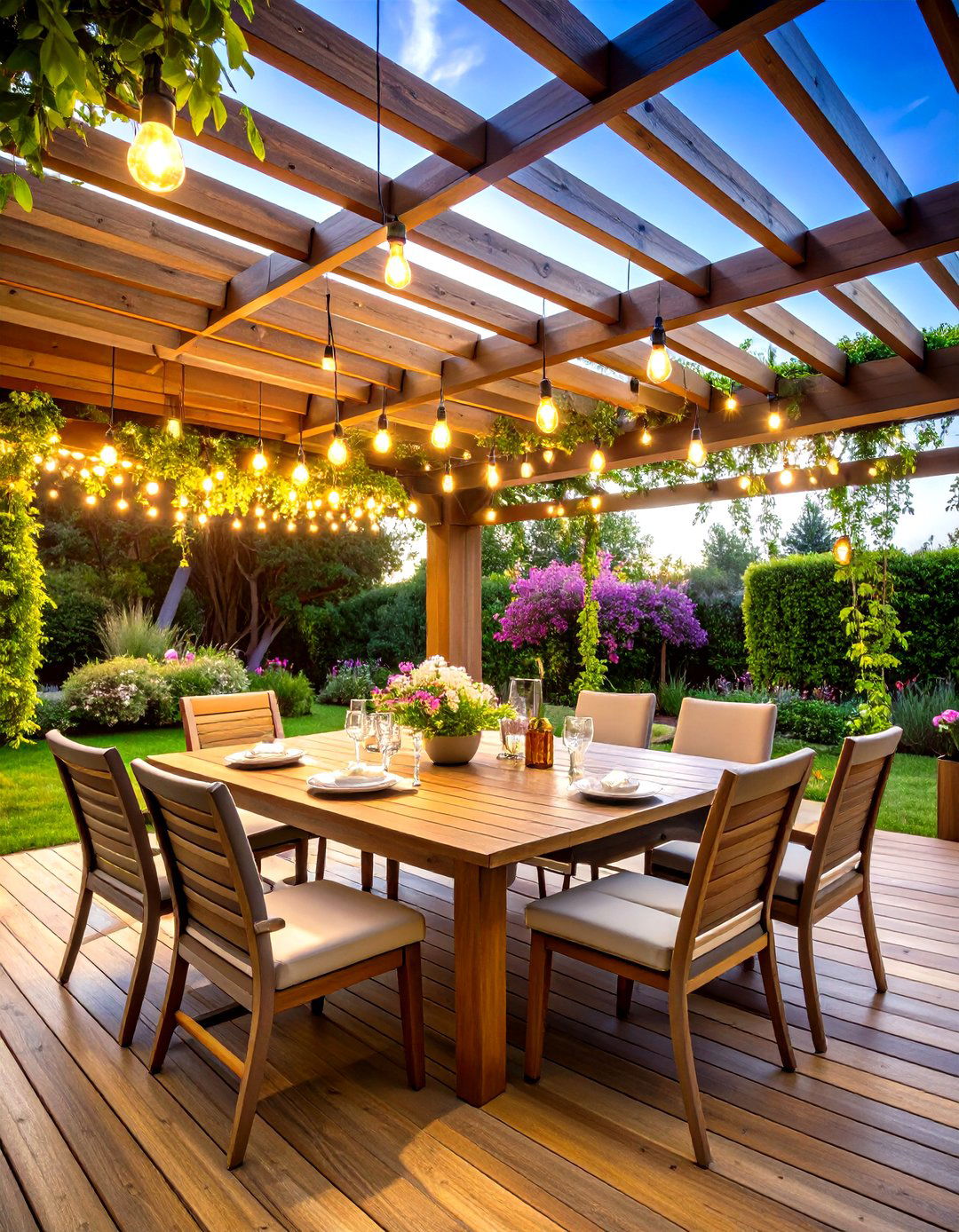
A slatted cedar or aluminum pergola instantly frames an outdoor dining area, giving it room-like definition while filtering harsh midday sun. Choose a weather-resistant teak table — its natural oils repel moisture and insects, extending longevity. Add climbing jasmine or wisteria to soften the structure, and mount dimmable Edison-style bulbs along the rafters to transition from brunch to starlit suppers. Because pergolas are semi-open, they maintain airflow while creating shade, making alfresco meals feel both breezy and intimate.
2. Retractable Awning Dining Terrace
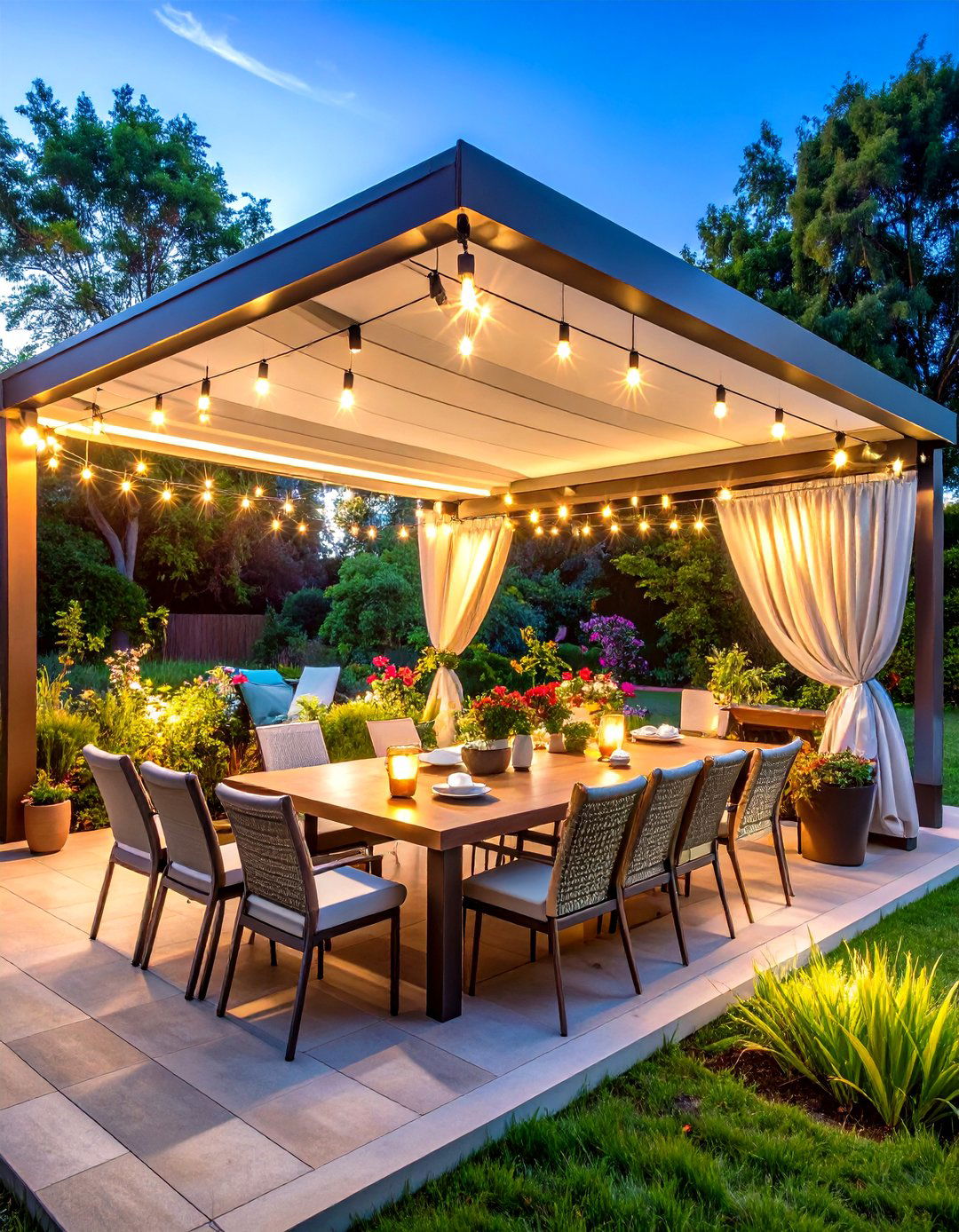
Unlike fixed roofs, a motorized retractable awning lets you dial in the perfect level of cover for changing weather or mood. Choose UV-blocking acrylic fabric to keep diners cool and prevent furniture fade, then pair it with fold-flat chairs that stash against the wall when the awning is closed. LED strip lights along the awning arms provide task lighting without cords, and side curtains can zip on to tame gusty evenings — extending your dining season by weeks.
3. Fire Pit Centerpiece Dining Area

A low-profile fire-pit table doubles as heat source and dramatic focal point, encouraging guests to linger even when the temperature dips. Contemporary models feature glass-bead burners and push-button ignition for smoke-free flames. Arrange swivel dining chairs in a circle so everyone shares the warmth; add a raised outer ledge for safe plating. Because the heat rises gently, food stays warm without scorching, creating a cozy, year-round venue for marshmallow-toasting or mulled-cider nights.
4. String-Light Canopy Dining Courtyard
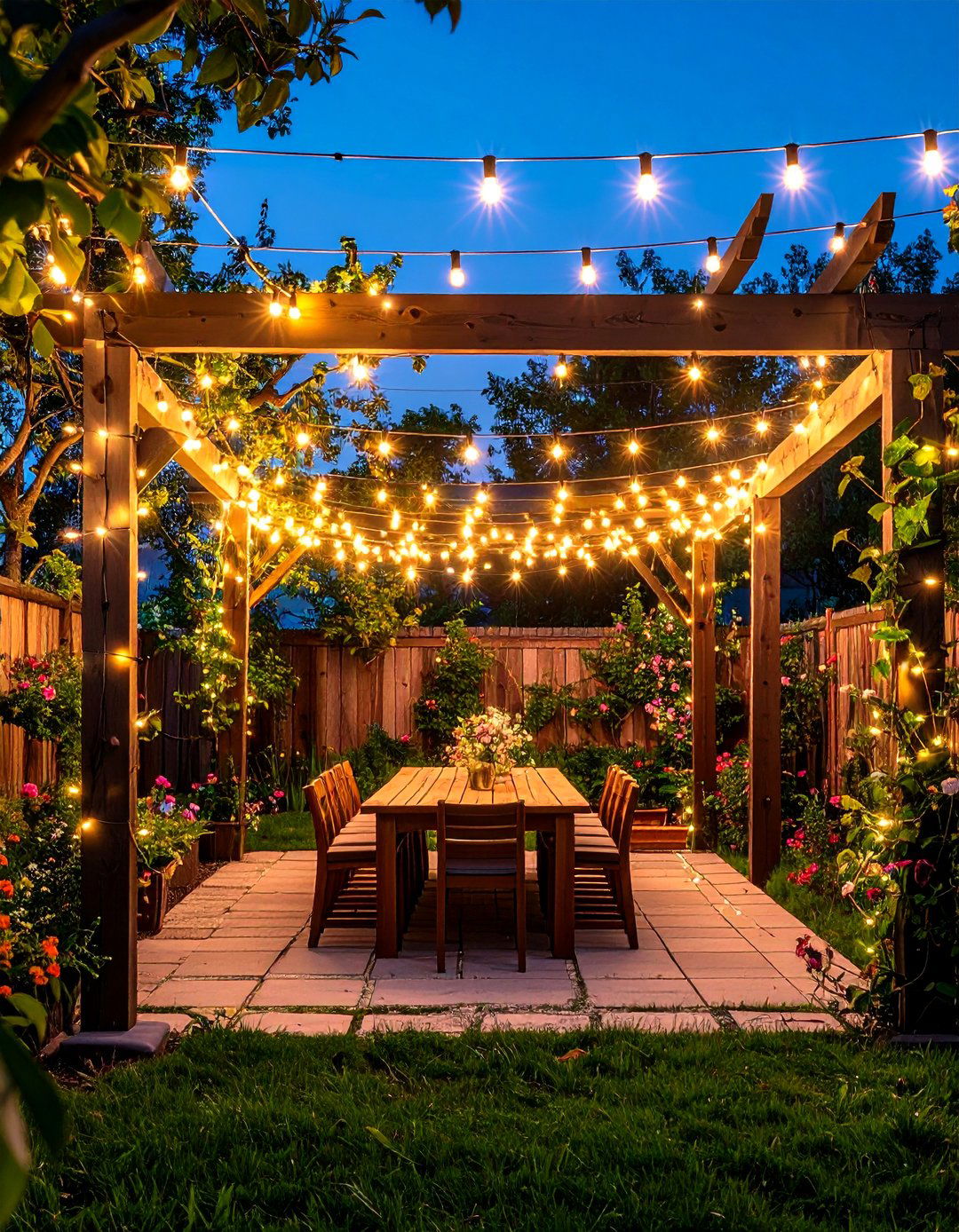
There’s a reason cafés worldwide drape LEDs overhead — string lights instantly add ambience for pennies per square foot. Look for IP65-rated, shatter-resistant bulbs so sudden rain or rogue soccer balls won’t end your party. Run the strands in a fan pattern from a central pole to surrounding fence posts for even illumination that feels like a festive ceiling. Warm-white filaments flatter skin tones and food presentation, turning casual weeknight tacos into event-worthy feasts.
5. Living-Wall Outdoor Dining Nook
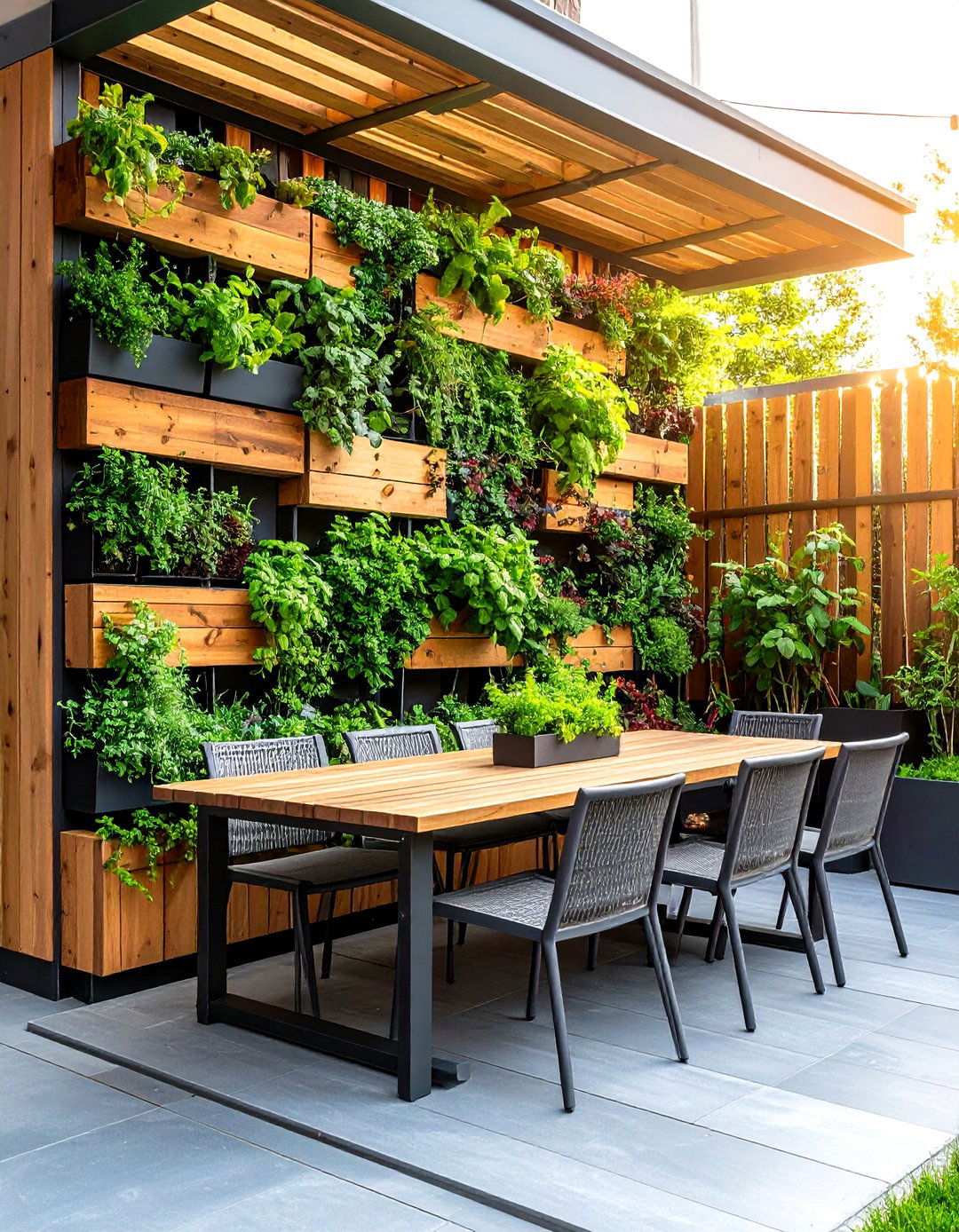
Vertical gardens turn a blank wall into lush backdrop and natural sound-buffer, making conversations easier over clinking glasses. Modular pocket panels or recycled-bottle systems simplify installation; choose trailing herbs like thyme and mint so diners can snip garnish tableside. Because living walls cool ambient air by evapotranspiration, they drop perceived temperature several degrees — perfect for hot-climate dinner hours. Drip irrigation on a timer keeps maintenance low, leaving you free to savor the greenery.
6. Sustainable Bamboo Deck Dining Space

Fast-growing bamboo earns top marks for renewability while rivaling hardwood durability when strand-woven and UV-sealed. Pair the deck with recycled-plastic composite chairs that resist rot and never need repainting. A slimline solar-panel umbrella powers subtle overhead fans, circulating air without grid electricity. By opting for low-impact materials, you reduce environmental footprint and future upkeep, proving that style and stewardship can share the same table.
7. Modular Furniture Patio Dining Zone
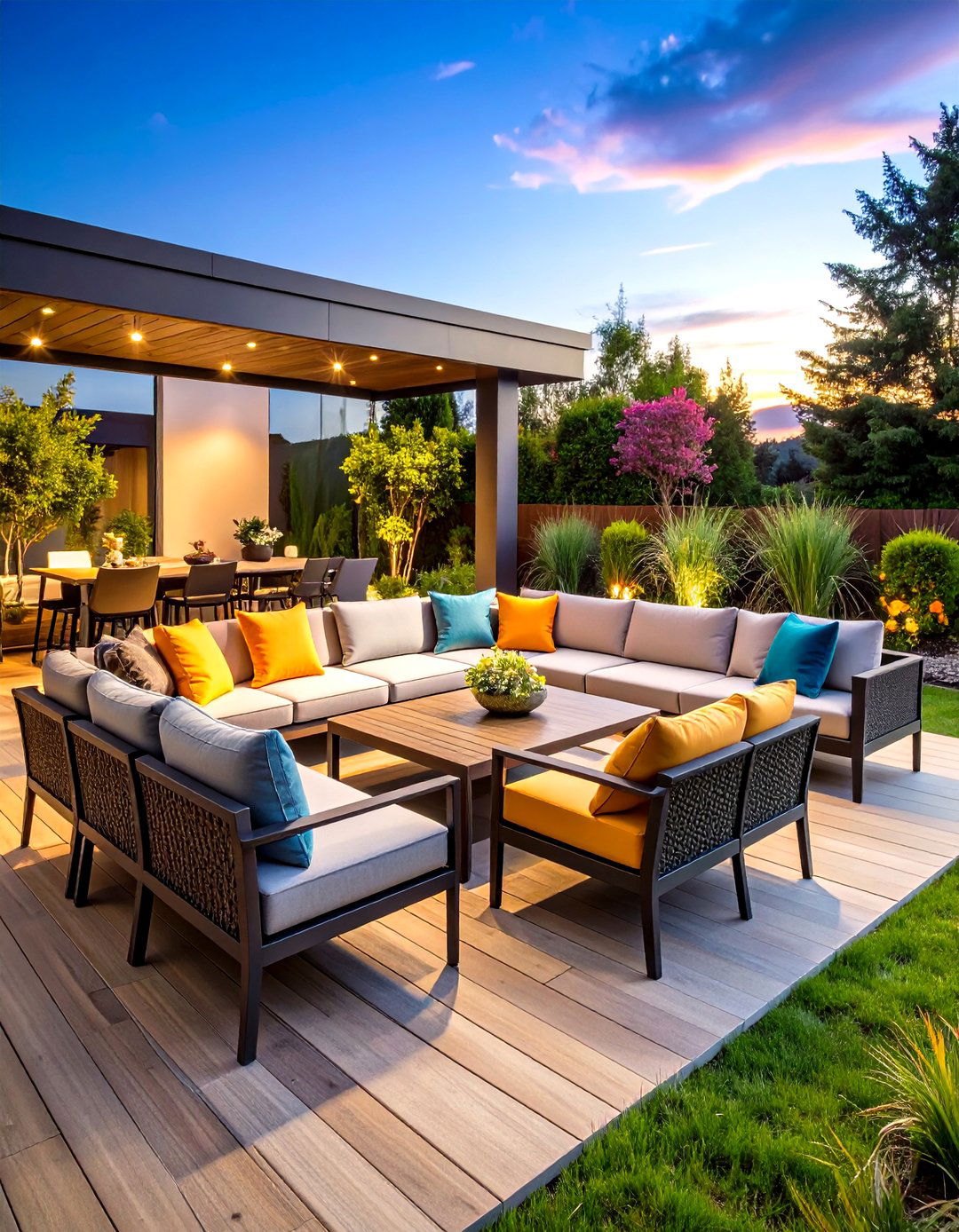
Today’s outdoor sectionals use hidden clips and lightweight aluminum frames, letting you shift from banquet-length dining to fireside lounge in minutes. Choose pieces with interchangeable backrests and cushions in fade-proof acrylic so layouts — and color palettes — can evolve with the season. Integrated side tables pop up for appetizers, then tuck away when the board games begin, creating an endlessly adaptable entertainment hub.
8. Built-In Bench Banquette Dining Corner
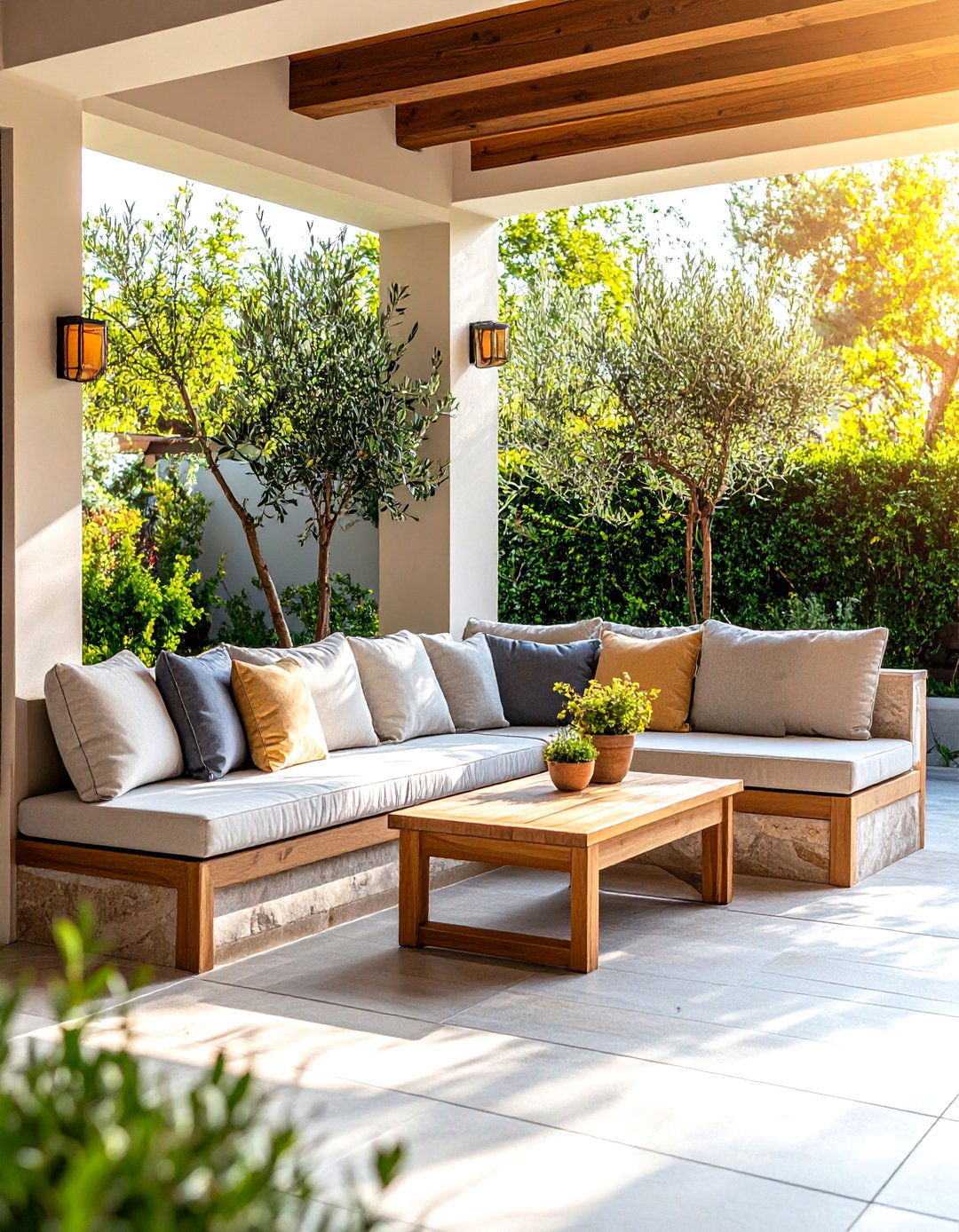
Framing two sides of a patio with L-shaped masonry or cedar benches maximizes seating without crowding walkways. Storage lids hide chair pads and table linens, while thick, quick-dry foam cushions add indoor-level comfort. Anchor the arrangement with a sturdy pedestal table so guests slide in without navigating legs. Plant dwarf olive trees behind the backrest for soft screen and subtle fragrance, transforming a forgotten corner into Mediterranean-style dining enclave.
9. Poolside Bar-Height Dining Setup
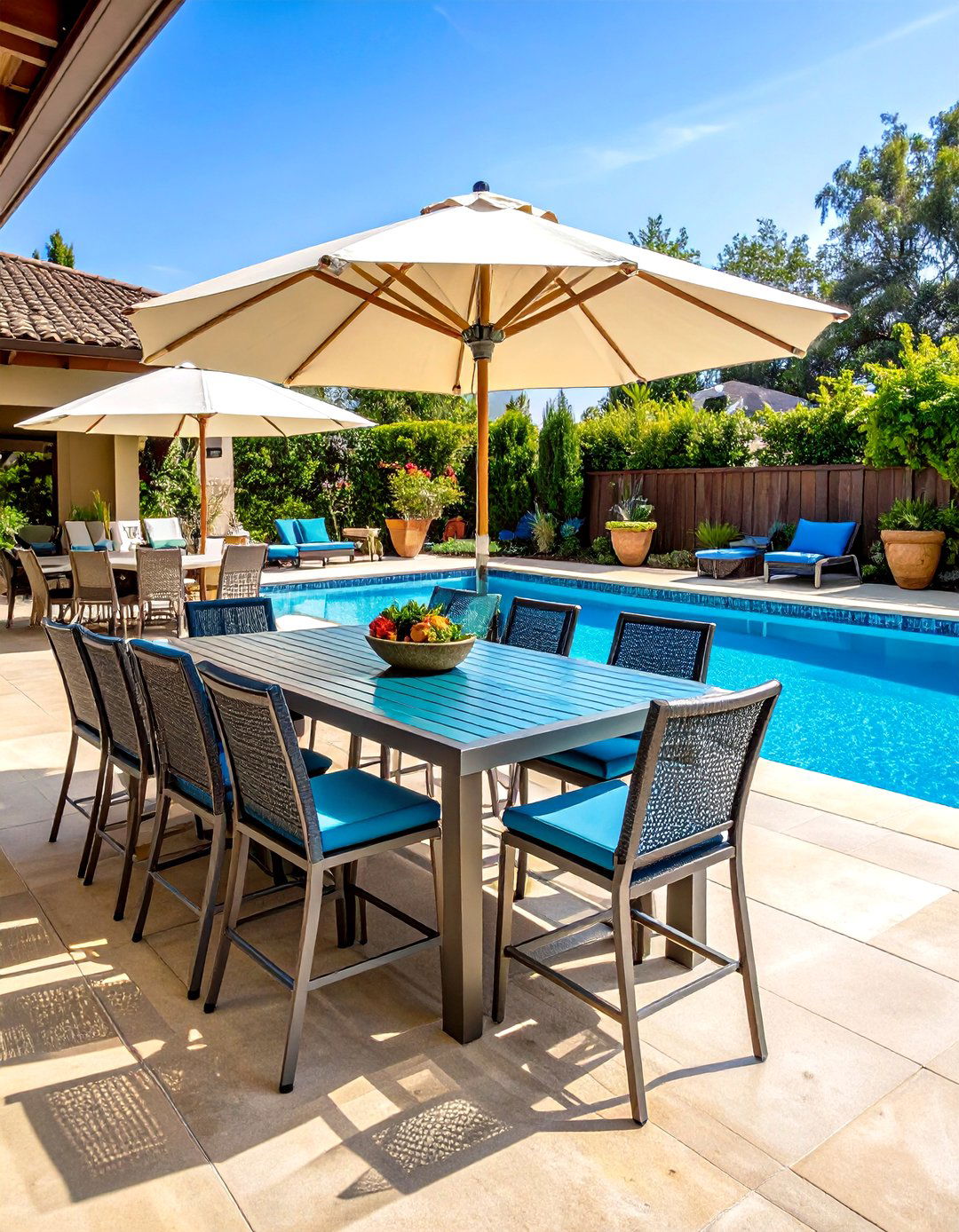
Bar-height tables keep plates safely above splashing kids and align eye level with swimmers for easy conversation. Opt for marine-grade aluminum stools that resist chlorine corrosion, topped with mesh sling seats to dry fast. A narrow, slatted tabletop lets pool water drip through, and an attached ice-bin insert keeps beverages within reach — no barefoot dashes to the kitchen required.
10. Rustic Farmhouse Table Al Fresco
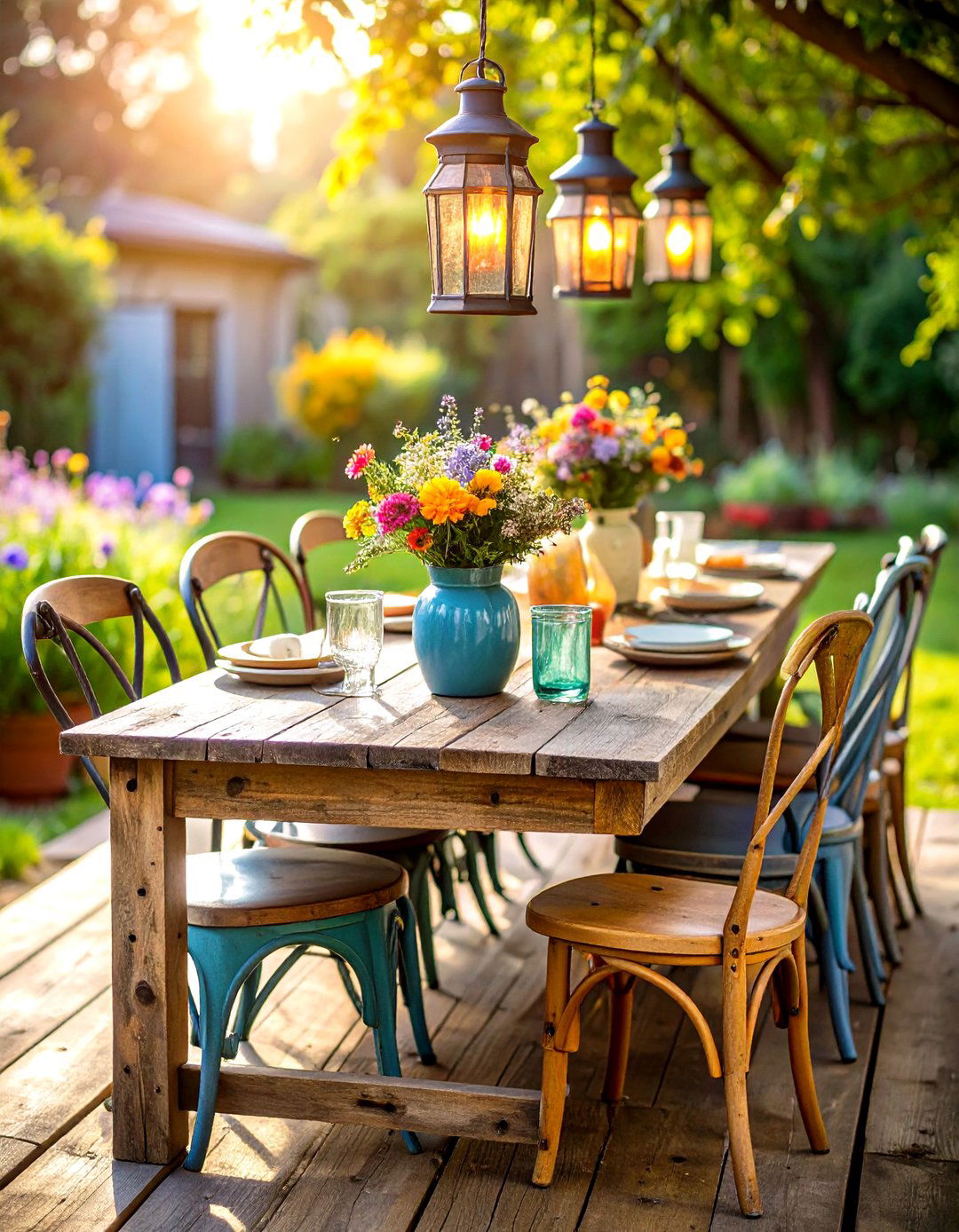
A reclaimed-wood trestle table brings heirloom soul to backyard meals. Seal boards with food-safe tung oil so patina deepens, not rots. Combine mismatched metal café chairs for a collected look, then suspend mason-jar lanterns overhead on a simple clothesline. The blend of rough-hewn textures and soft candlelight encourages long, story-filled dinners reminiscent of countryside gatherings.
11. Compact Balcony Bistro Dining Area
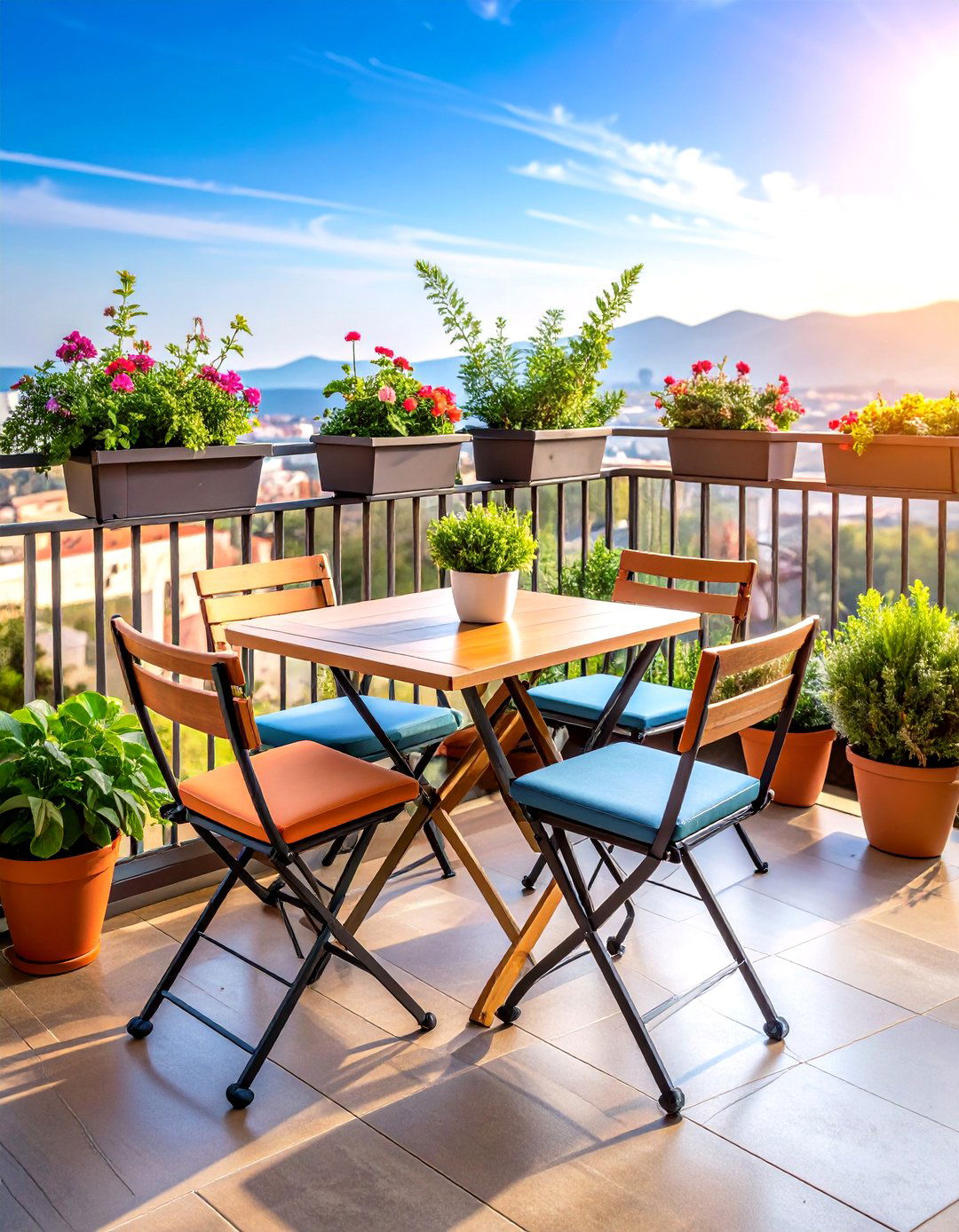
Even a 6-foot balcony can host breakfast for two with a fold-down wall-mounted table and stacking café stools. Use slim railing planters for herbs to free floor space, and clip-on solar lamps to avoid extension cords. A narrow, outdoor-rated rug defines the eating zone and muffles city noise, turning vertical living into vertical dining.
12. Mediterranean Gravel-Floor Dining Court
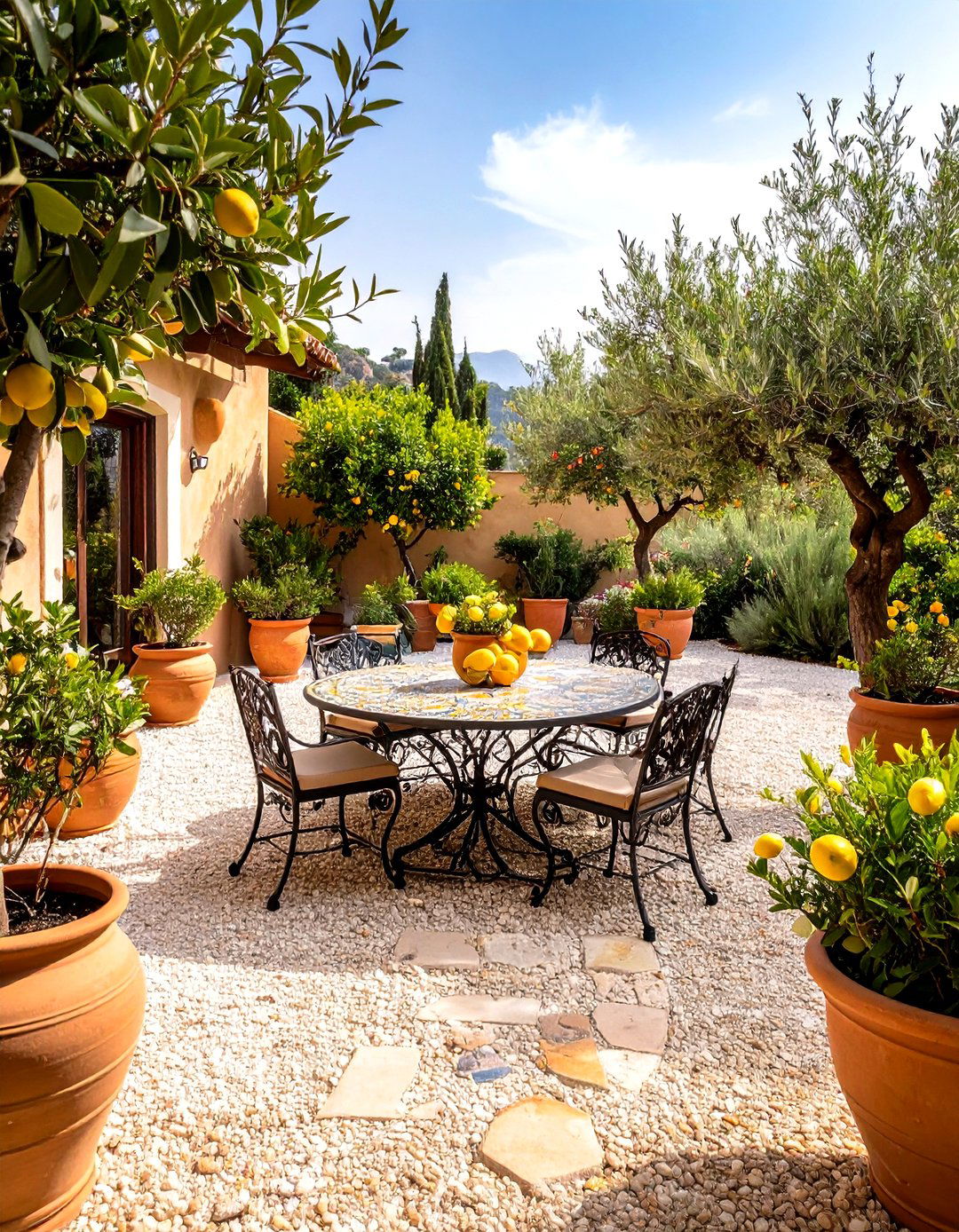
Pea-gravel grounds bounce light and drain rain quickly, creating a low-cost foundation that mimics European courtyards. Frame the area with terracotta pots of rosemary and lemon trees, then top a wrought-iron table with patterned tiles for splash of color. During hot spells, the light-colored stones reflect heat, keeping sandals cool underfoot.
13. Rooftop Garden Dining Oasis
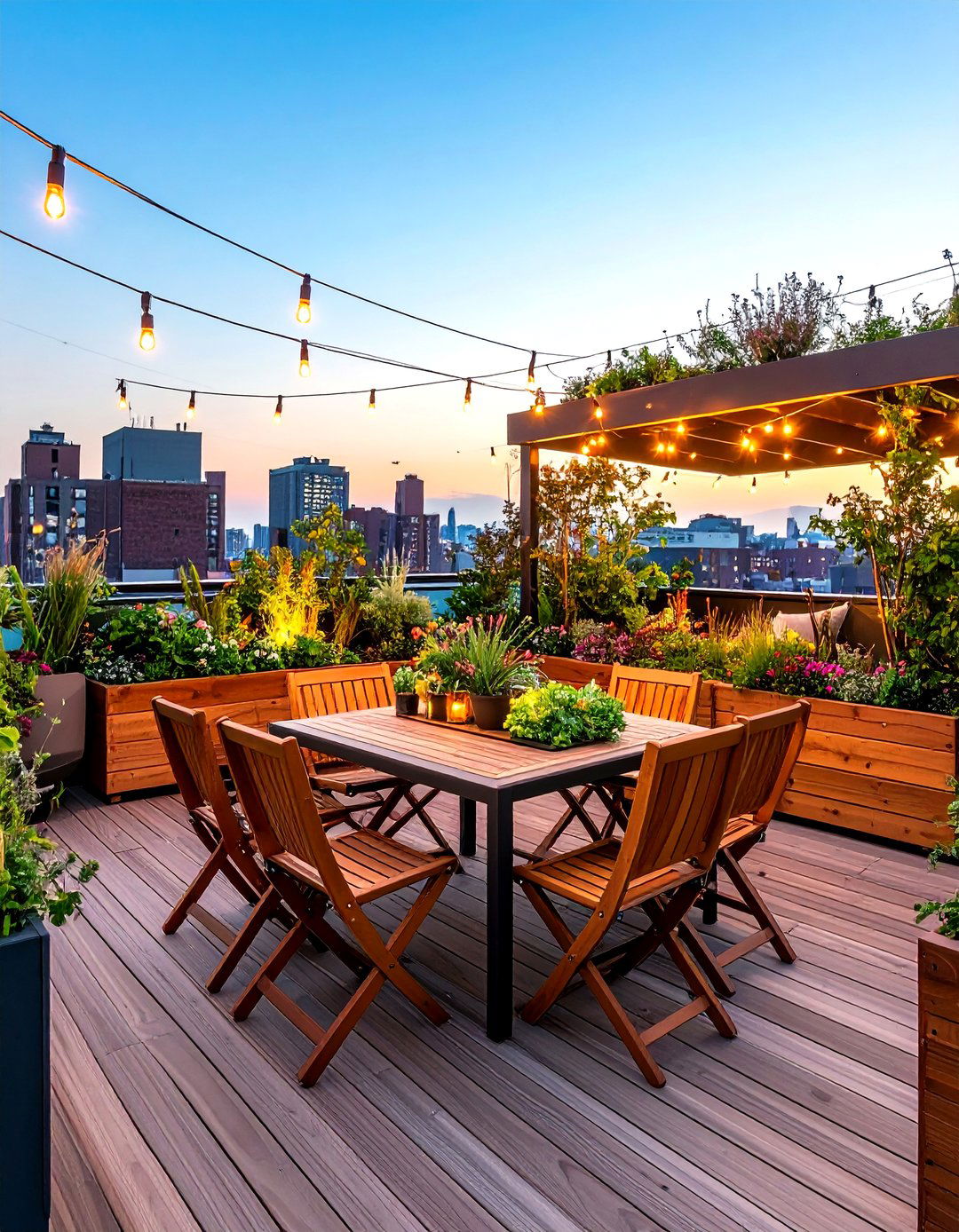
City rooftops gain second life when fitted with modular planter boxes that double as windbreaks. Lightweight composite decking protects the waterproof membrane while providing stable footing. Solar string lights charged all day guarantee ambience even if outlets are scarce, and collapsible teak director’s chairs store flat against the parapet between gatherings.
14. Screened-Pergola Bug-Free Dining Pavilion
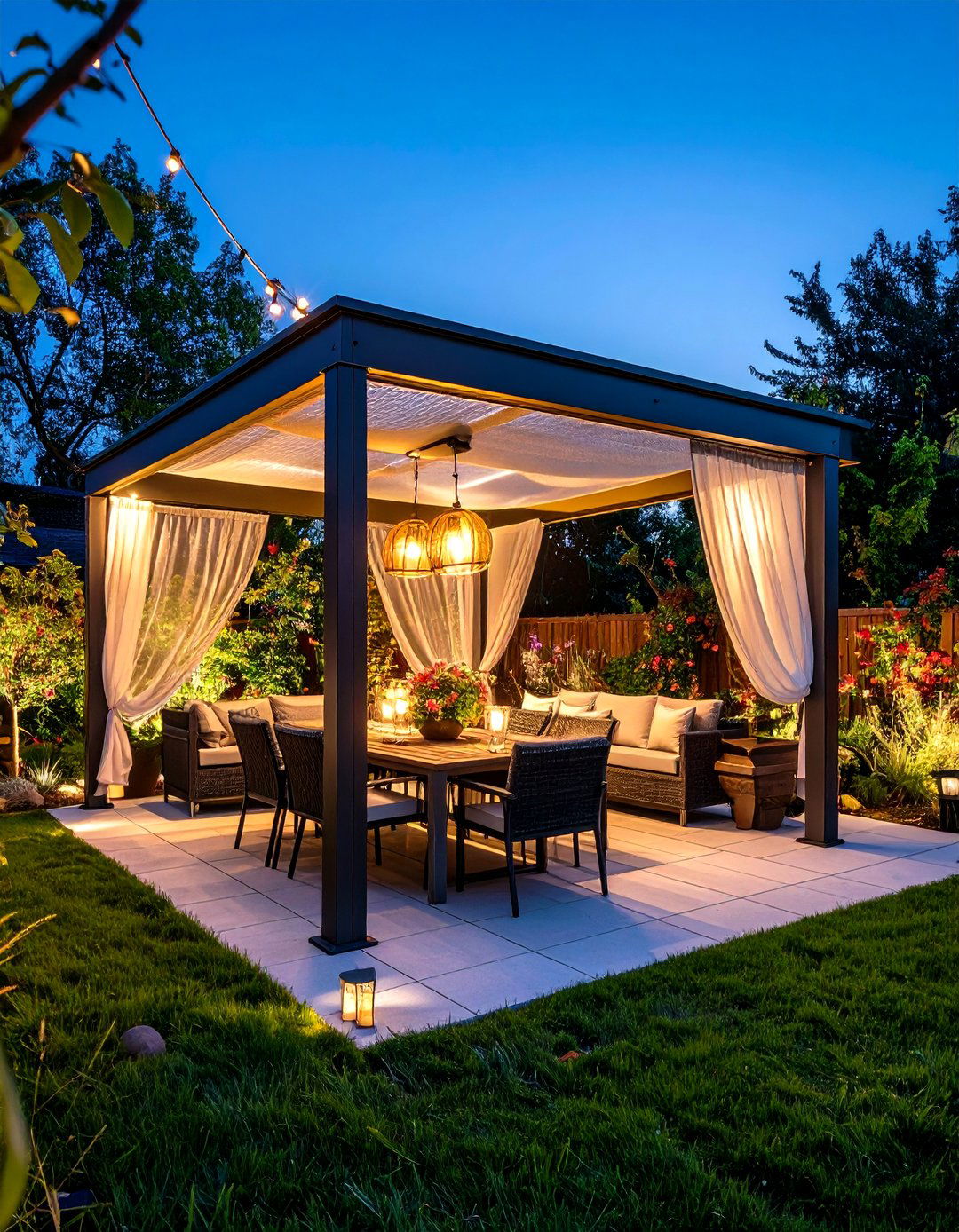
Mosquitoes can end outdoor dinners fast; a pergola wrapped in retractable insect screens offers protection without feeling enclosed. Choose fine fiberglass mesh to maintain airflow, and install ceiling-mounted infrared heaters so the pavilion remains useful after dusk in cooler months. A dimmable pendant fixture ensures the space still reads as elegant dining room — just one the bugs can’t enter.
15. Sunken Terrace Dining Lounge
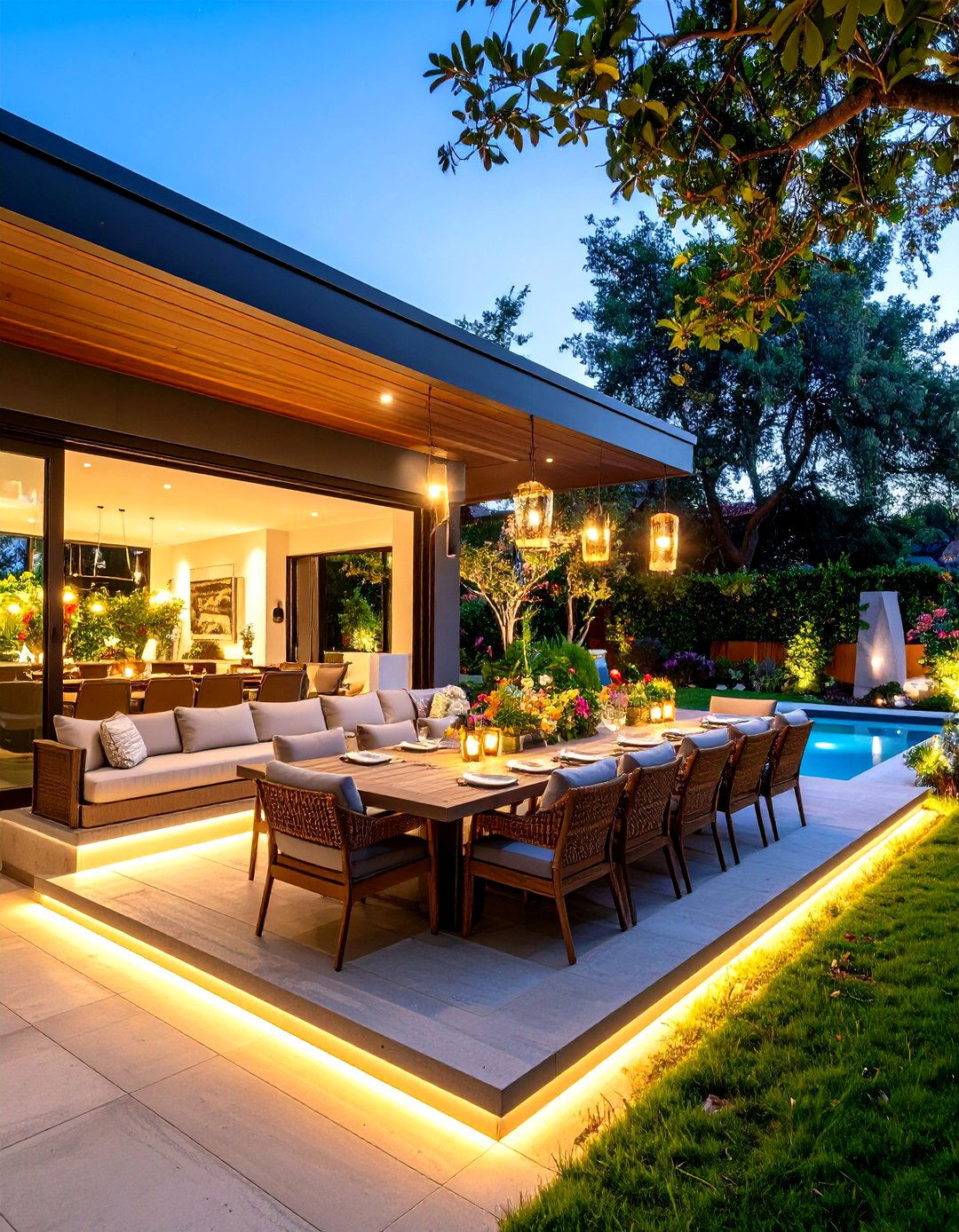
Dropping the dining area one or two steps below grade creates an intimate “room” sheltered from wind. Retaining walls double as seat backs; embed LED strip lights along treads for safe access. Because the surrounding lawn sits higher, conversations feel secluded while views of gardens remain unobstructed — a best-of-both-worlds layout.
16. Outdoor Kitchen & Dining Island Combo

Marrying grill, prep sink, and bar-height countertop into one stone island lets the cook stay part of the party. Add a cantilevered dining top so stools tuck under when not in use, and specify stain-proof porcelain slab that wipes clean faster than granite. With everything within arm’s reach, burgers hit plates sizzling, not lukewarm.
17. Heated Patio Dining Alcove
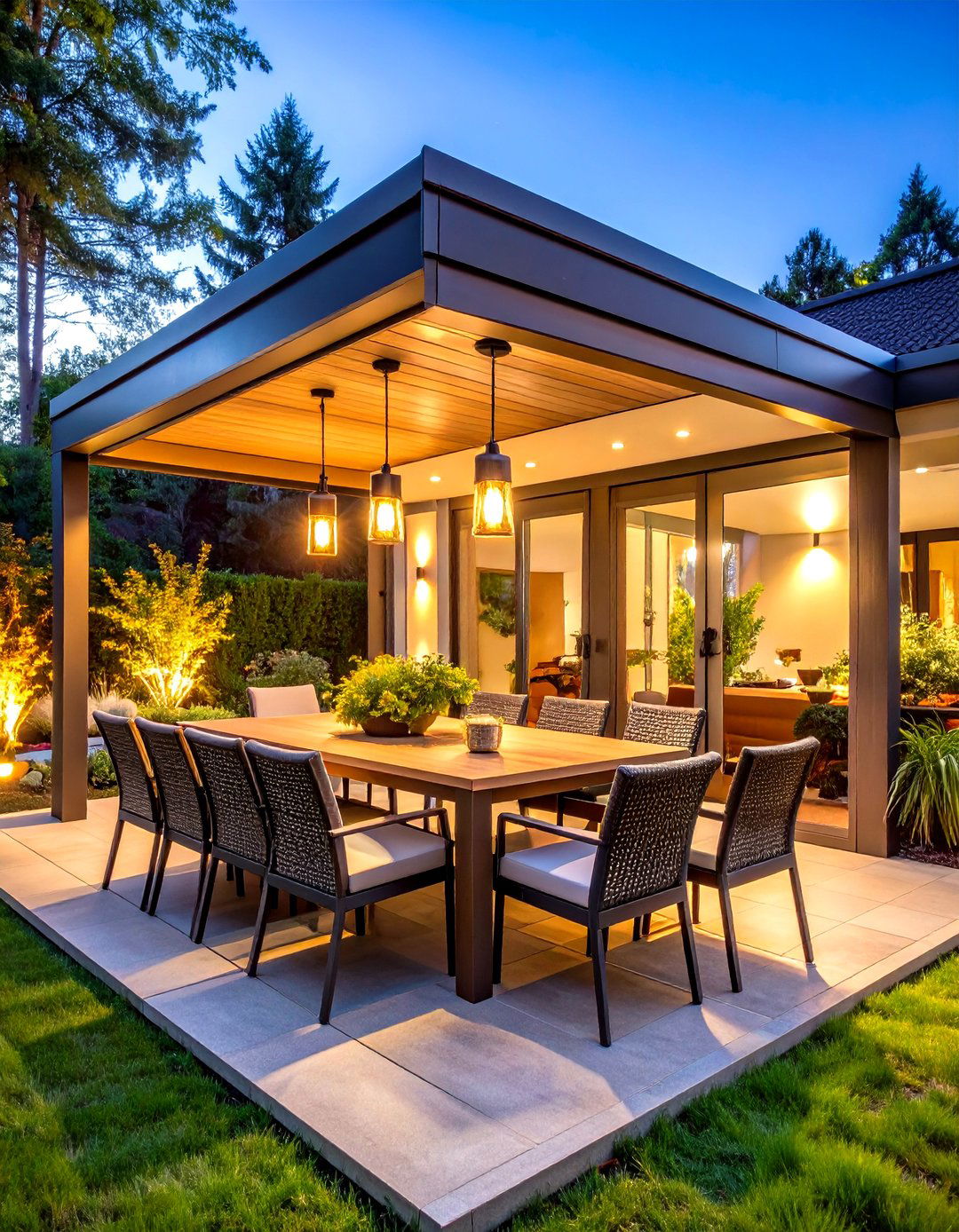
Infrared patio heaters mounted on overhead beams warm objects, not air, meaning your guests feel toasty despite chilly breezes. Pair them with wind-blocking glass panels on the upwind side to trap radiant heat. Using a thermostatic control avoids energy waste and keeps temperature constant, extending dining well into shoulder seasons.
18. Solar-Lit Pathway to Dining Landing
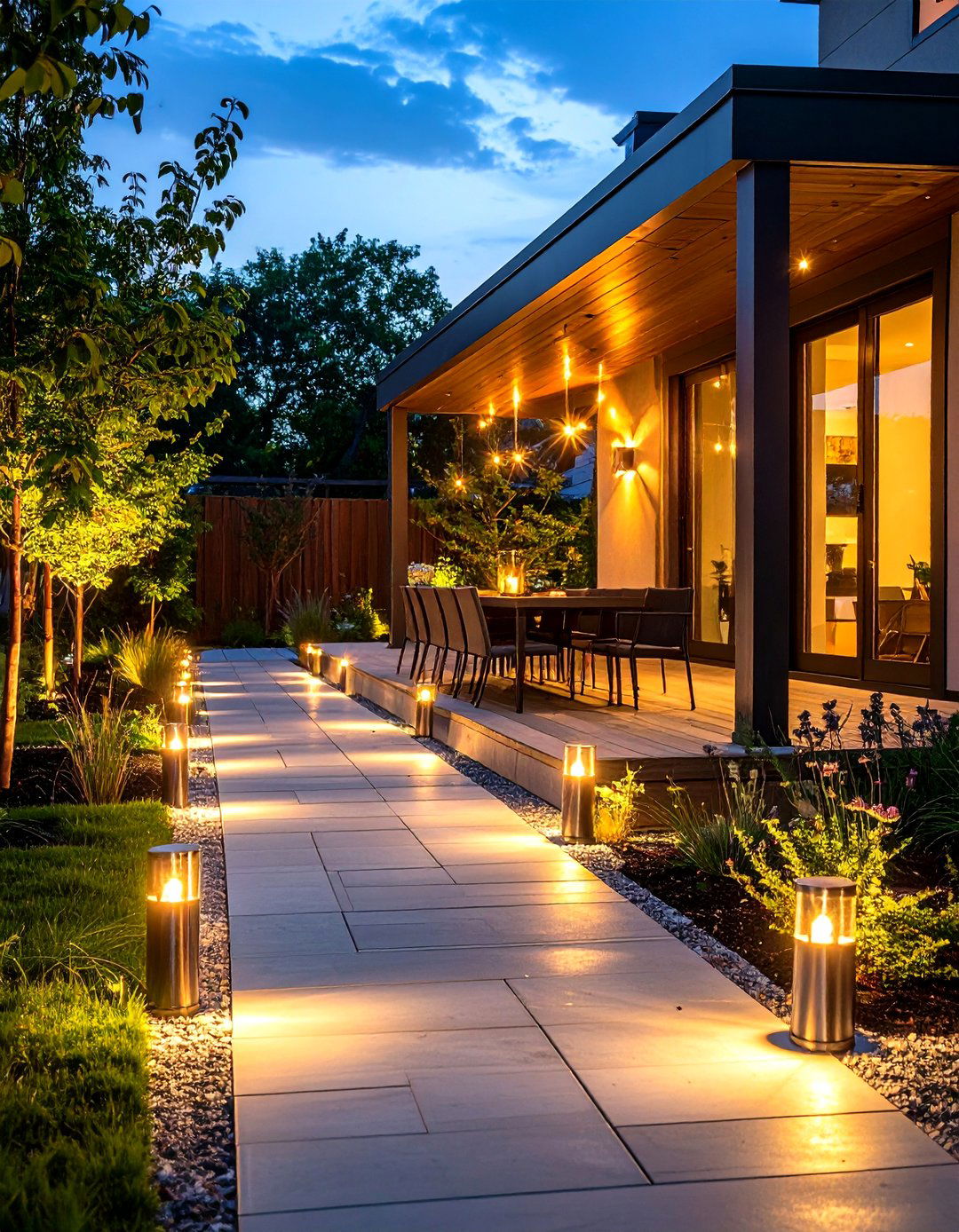
Guiding footsteps with ground-stake solar lights not only boosts safety but creates dramatic approach to an otherwise hidden dining terrace. Select stainless-steel fixtures to echo flatware and reflect candle flicker. Because units charge during the day, they automatically illuminate at dusk — zero effort, maximum effect.
19. Fold-Away Picnic-Style Dining Platform
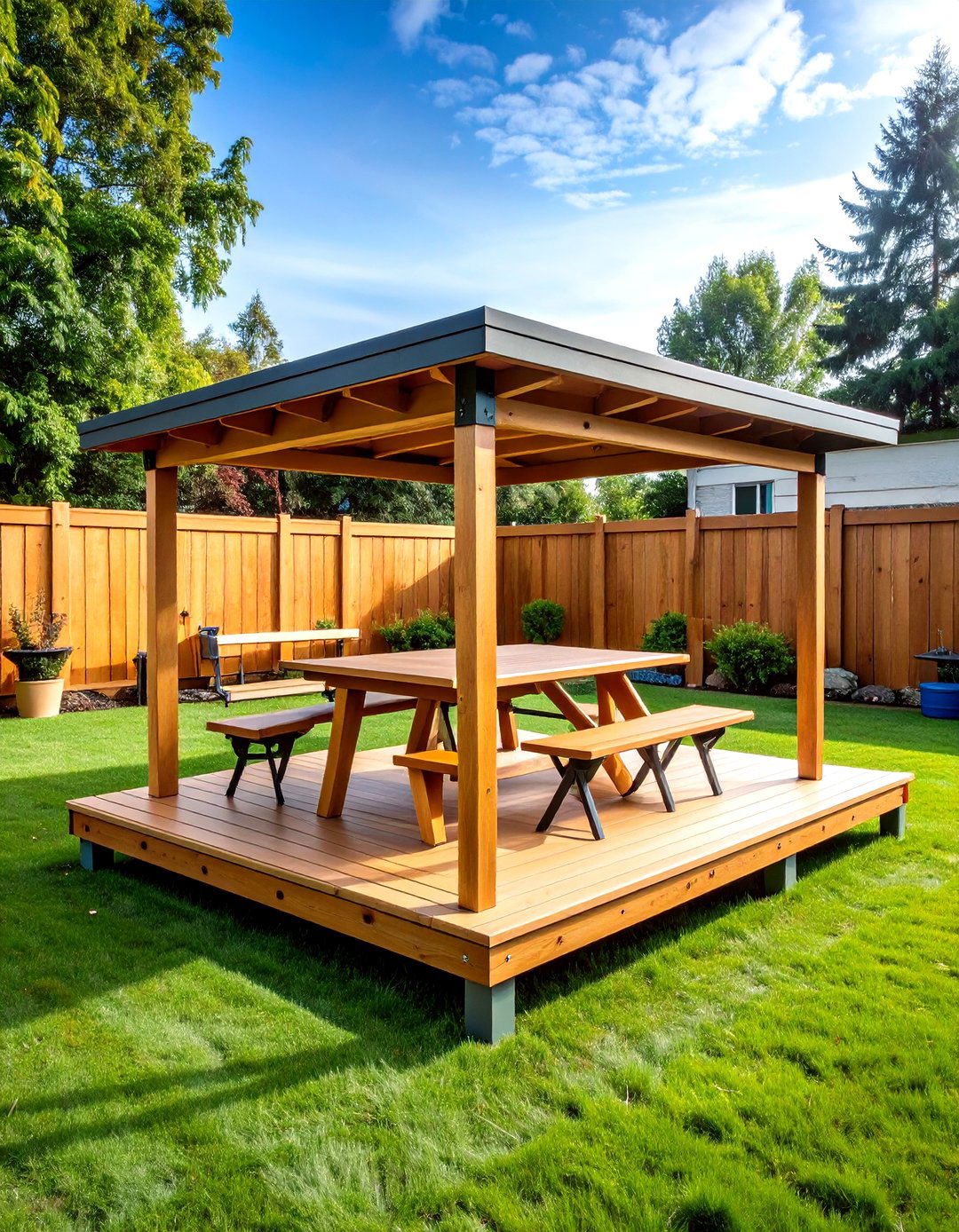
For multi-use lawns, install a built-in folding table that hinges from a cedar fence: swing it down for impromptu lunches, then lock it upright to reclaim play space. Portable benches on wheels roll into a shed when the badminton net goes up. It’s the perfect solution for smaller yards that juggle kids’ games and adult gatherings.
20. Shade Sail Open-Air Dining Square
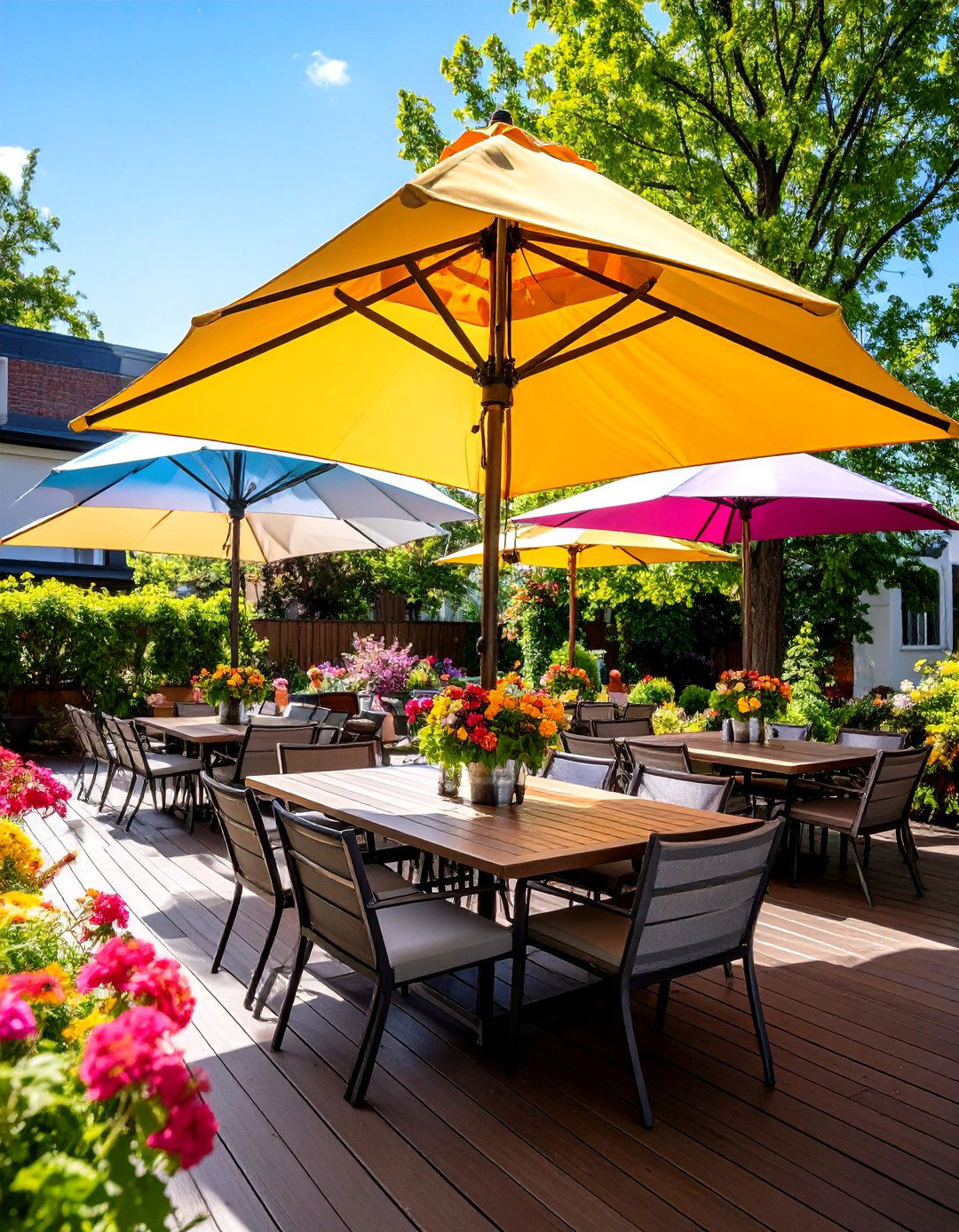
Triangular HDPE shade sails overlap to sculpt graphic shadows while blocking 90 percent of UV rays. Anchor corners to galvanized posts set outside the dining footprint so the table area stays obstruction-free. Because sails breathe, they resist pooling rainwater and flutter in breezes, generating a resort-like vibe without resort prices.
21. Trellis-Framed Bloom Dining Alley

Running a dining table the length of a garden trellis invites guests to dine beneath arches of climbing roses or grapevines. Attach solar-powered fairy lights along the lattice for soft glow once petals fade. As vines mature, the dining alley becomes fragrant tunnel — nature’s own scented ceiling.
22. Mixed-Material Concrete-Wood Dining Pad
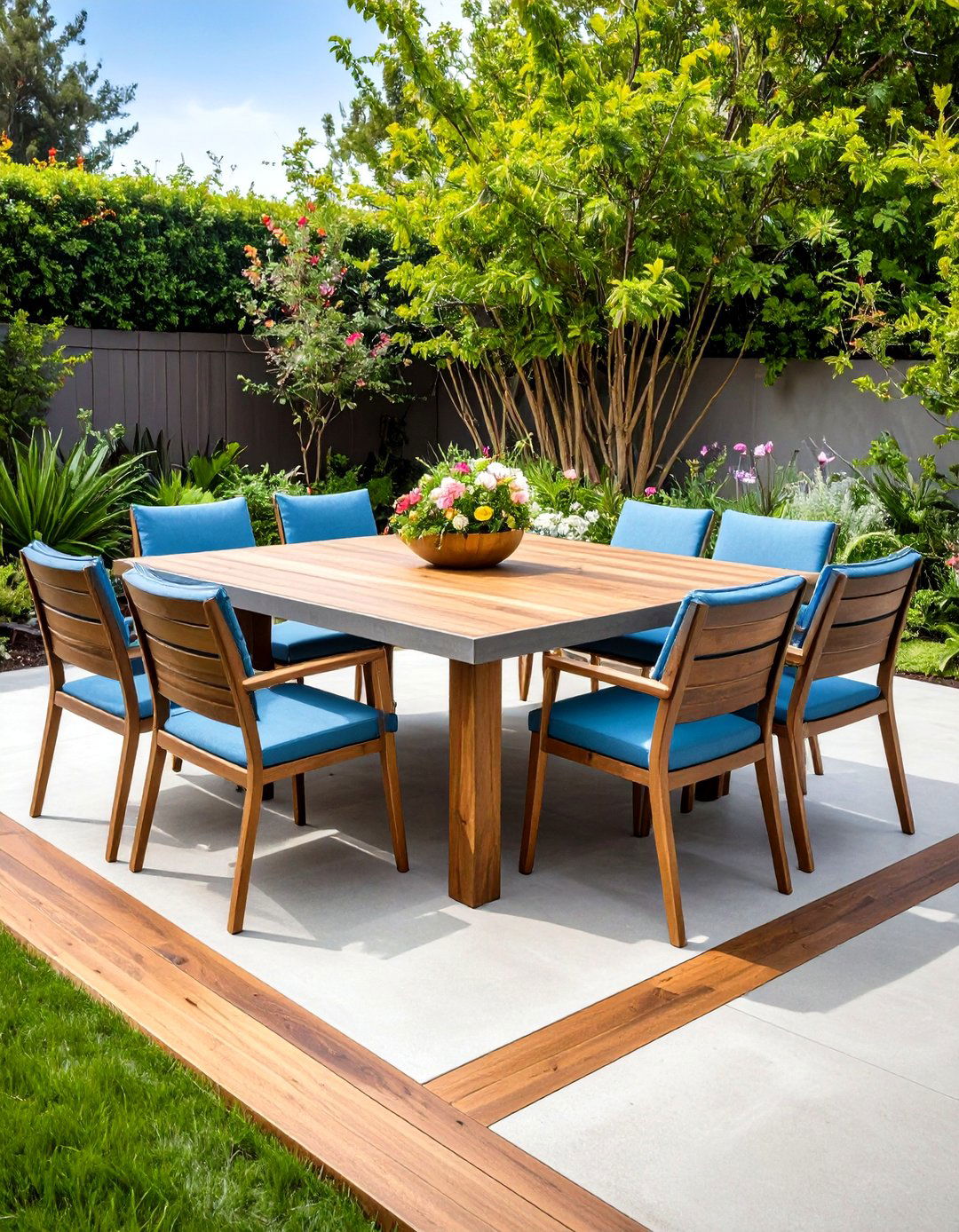
Blend poured-in-place concrete rectangles with inset ipe strips to break visual monotony and provide warmer footing under chairs. Set a powder-coated steel table at center; its industrial edge contrasts the organic wood, proving that outdoor dining doesn’t have to choose between modern and natural — it can be both.
23. Smart-Lighting Tech Dining Scene
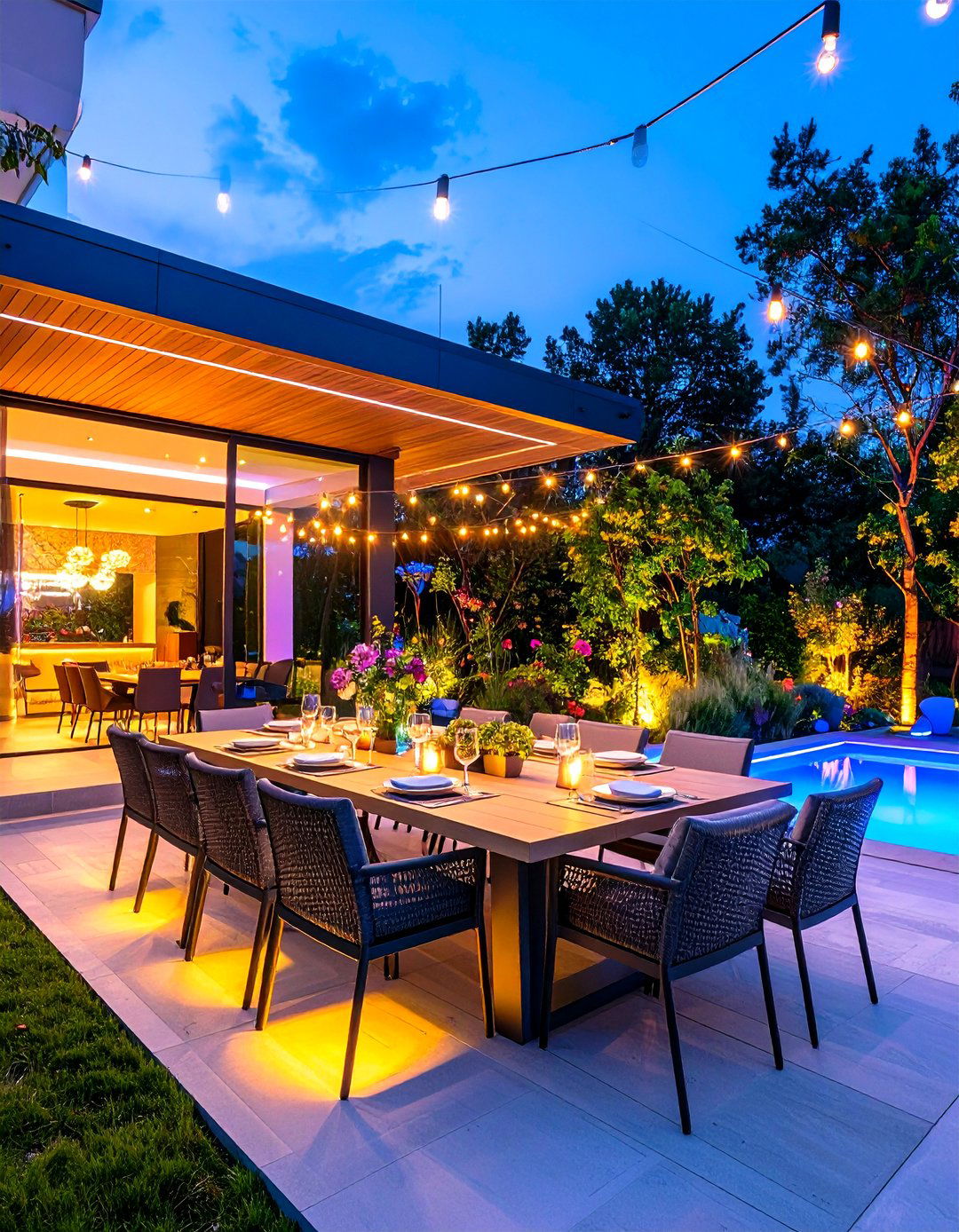
Wi-Fi-enabled RGB fixtures let you shift from candle-gold to celebration colors via phone. Pair them with motion sensors so pathways light as guests move, conserving power. On movie nights, dim everything at once; on birthdays, cue color sequences. Smart tech removes the last barrier between indoor convenience and outdoor magic.
24. Kid-Friendly Lawn-Edge Dining Spot

Position a low picnic table at the lawn’s edge so young diners can dart off for tag between bites. Water-resistant foam mats beneath catch inevitable spills, and unbreakable melamine place settings remove stress. String a chalkboard menu on nearby fence pickets so kids can doodle while waiting for dessert — family dining, upgraded.
25. Garden Arbor Romantic Dining Hideaway
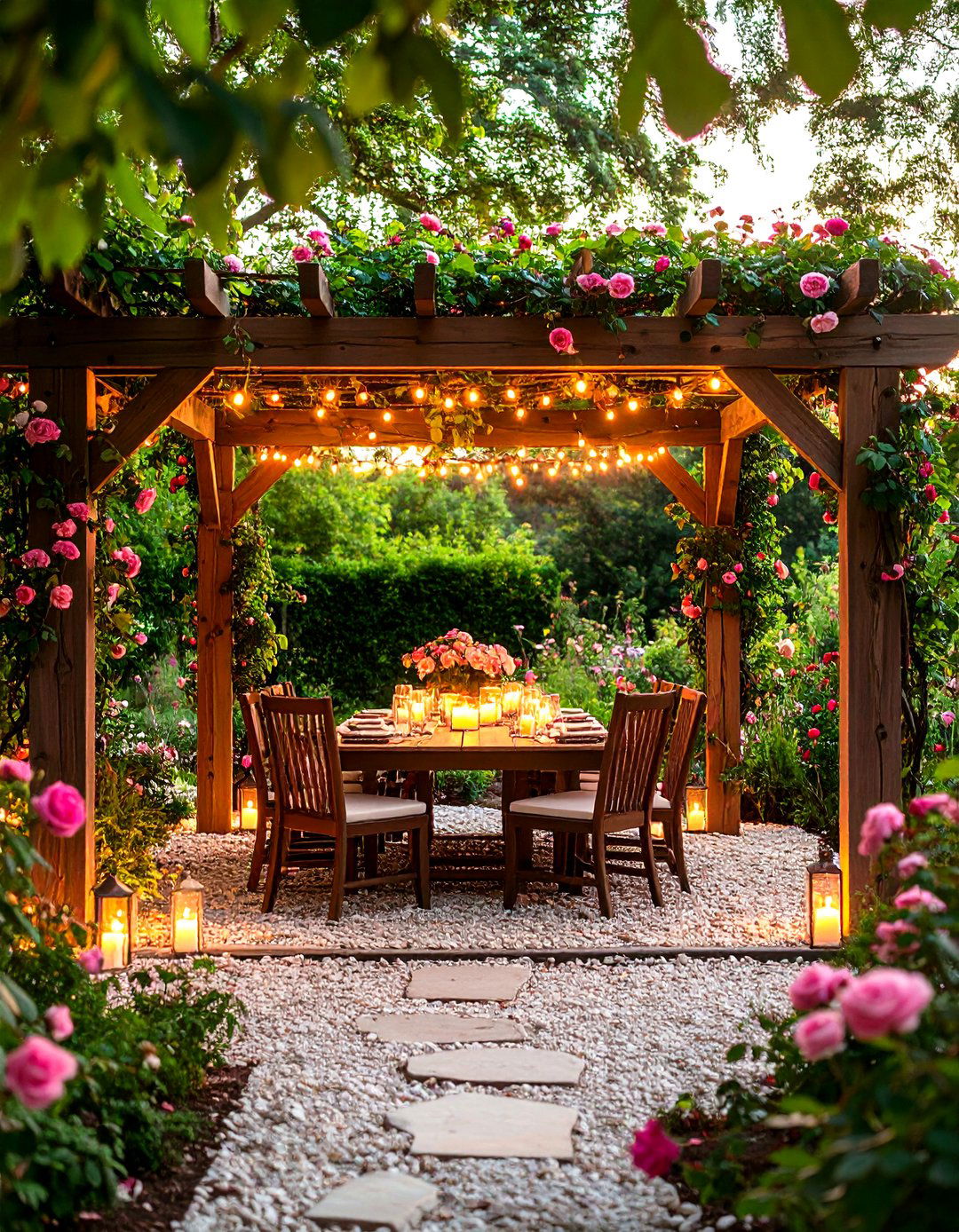
Finally, frame a small bistro set beneath a wooden garden arbor draped in climbing roses for an intimate tête-à-tête. Battery-powered flameless candles flicker safely among blooms, and a gravel crunch underfoot adds sensory delight. Tucked away from the main patio, the arbor feels like secret room — ideal for anniversaries or quiet morning coffee.
Conclusion:
Outdoor dining areas succeed when they blend comfort, adaptability, and character — be it through sustainable bamboo decks, tech-savvy lighting, or simple string-light canopies. By choosing durable materials, flexible layouts, and nature-inspired accents, you craft spaces that invite people outside more often and for longer stretches — transforming every meal into a mini vacation.


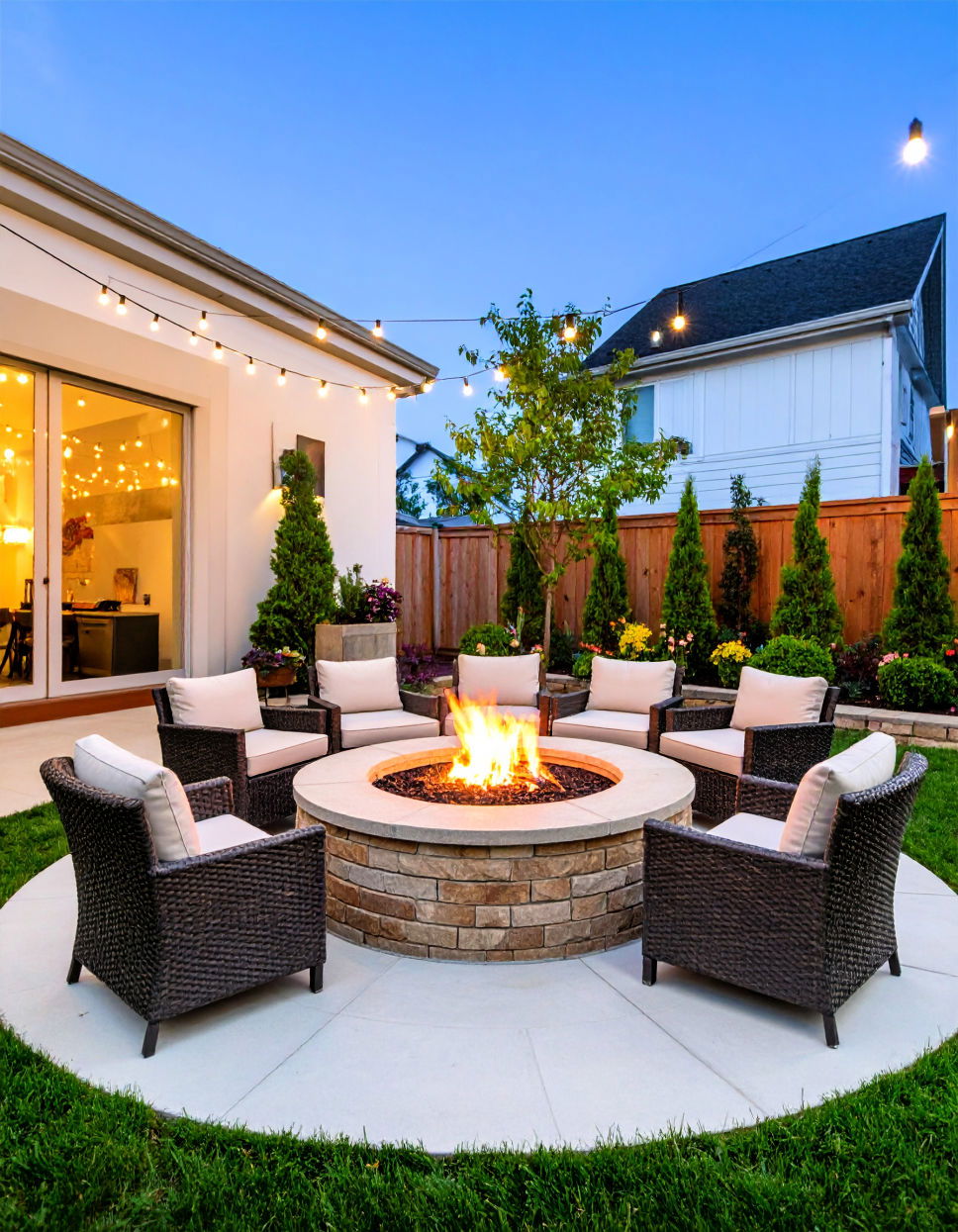
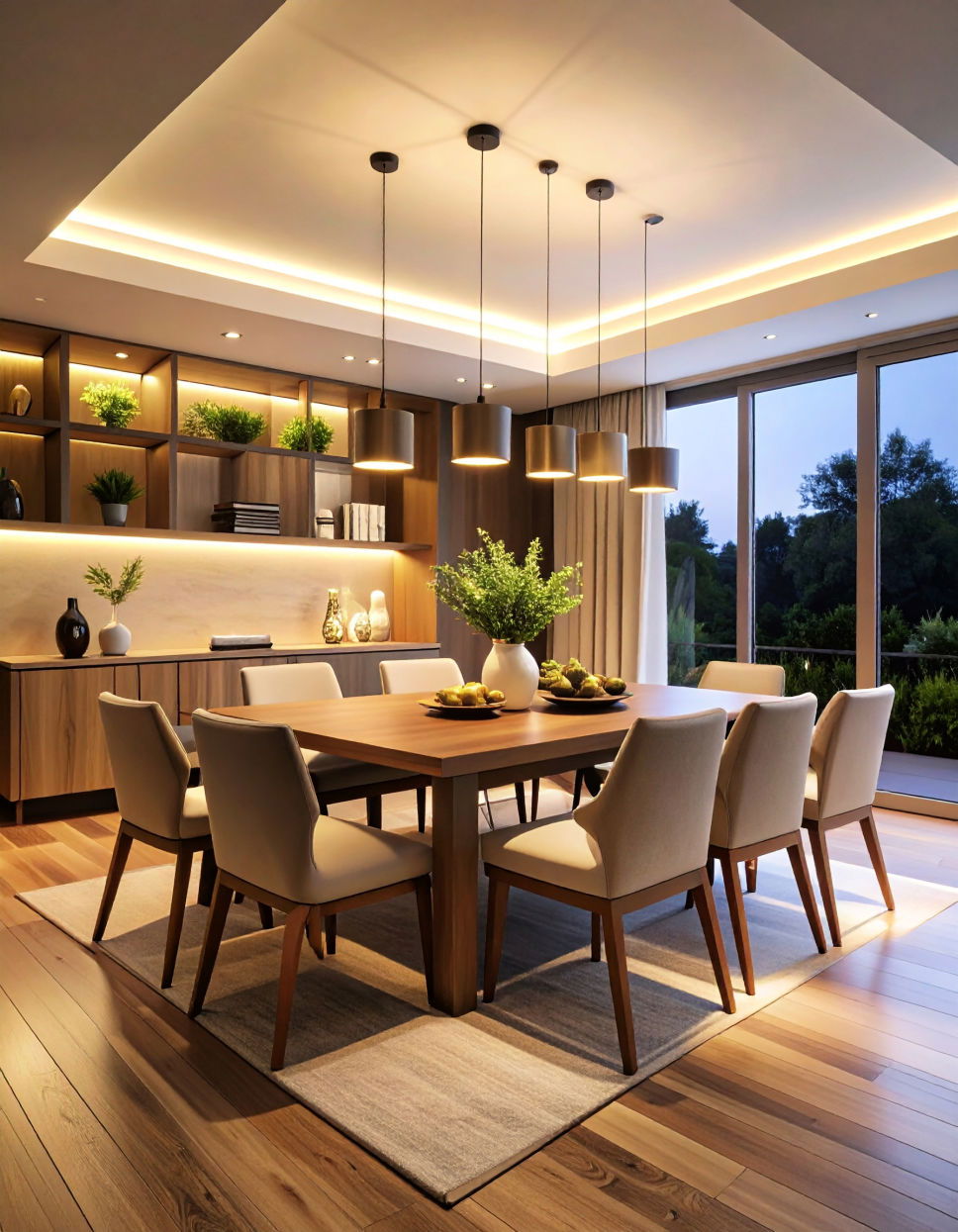

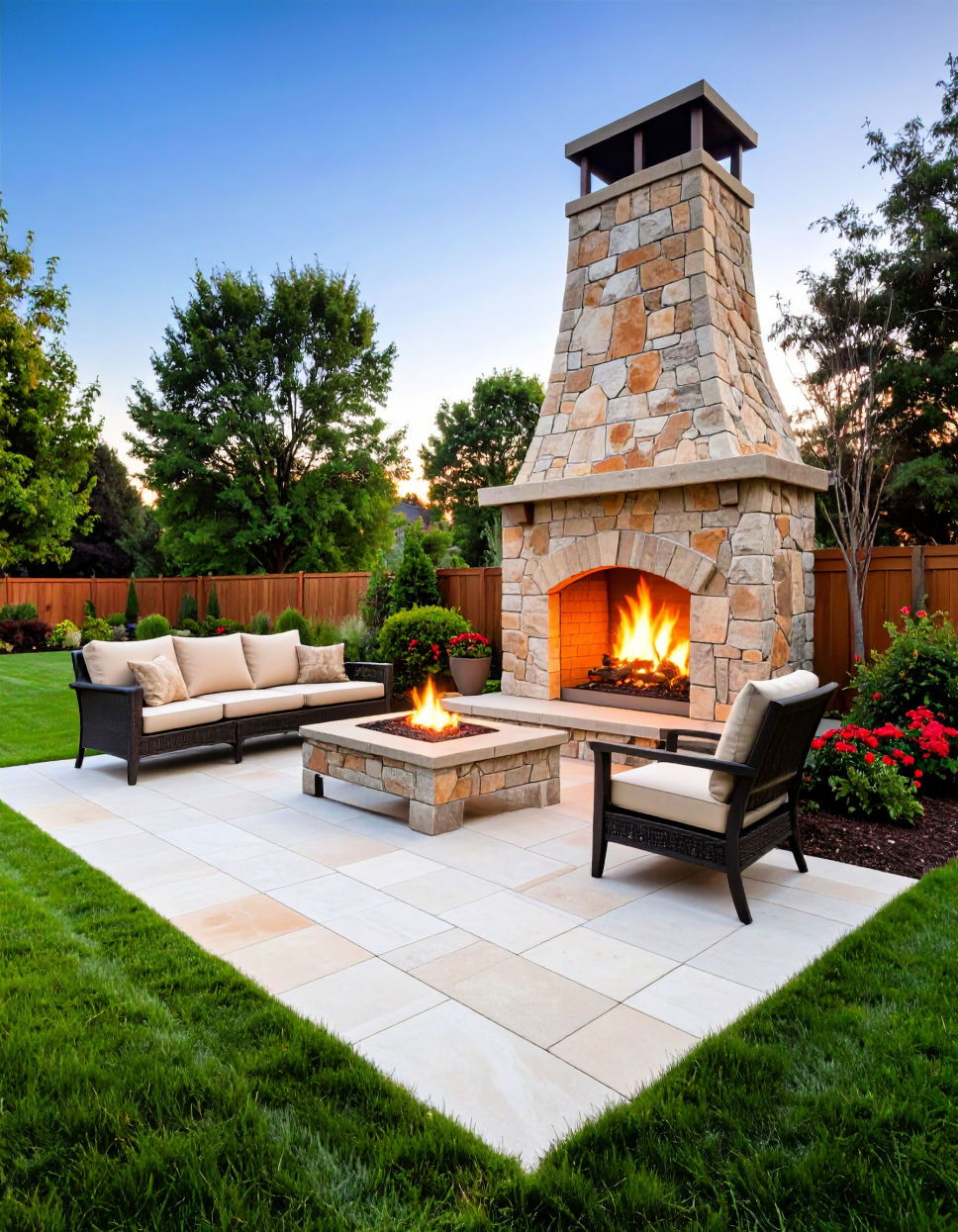
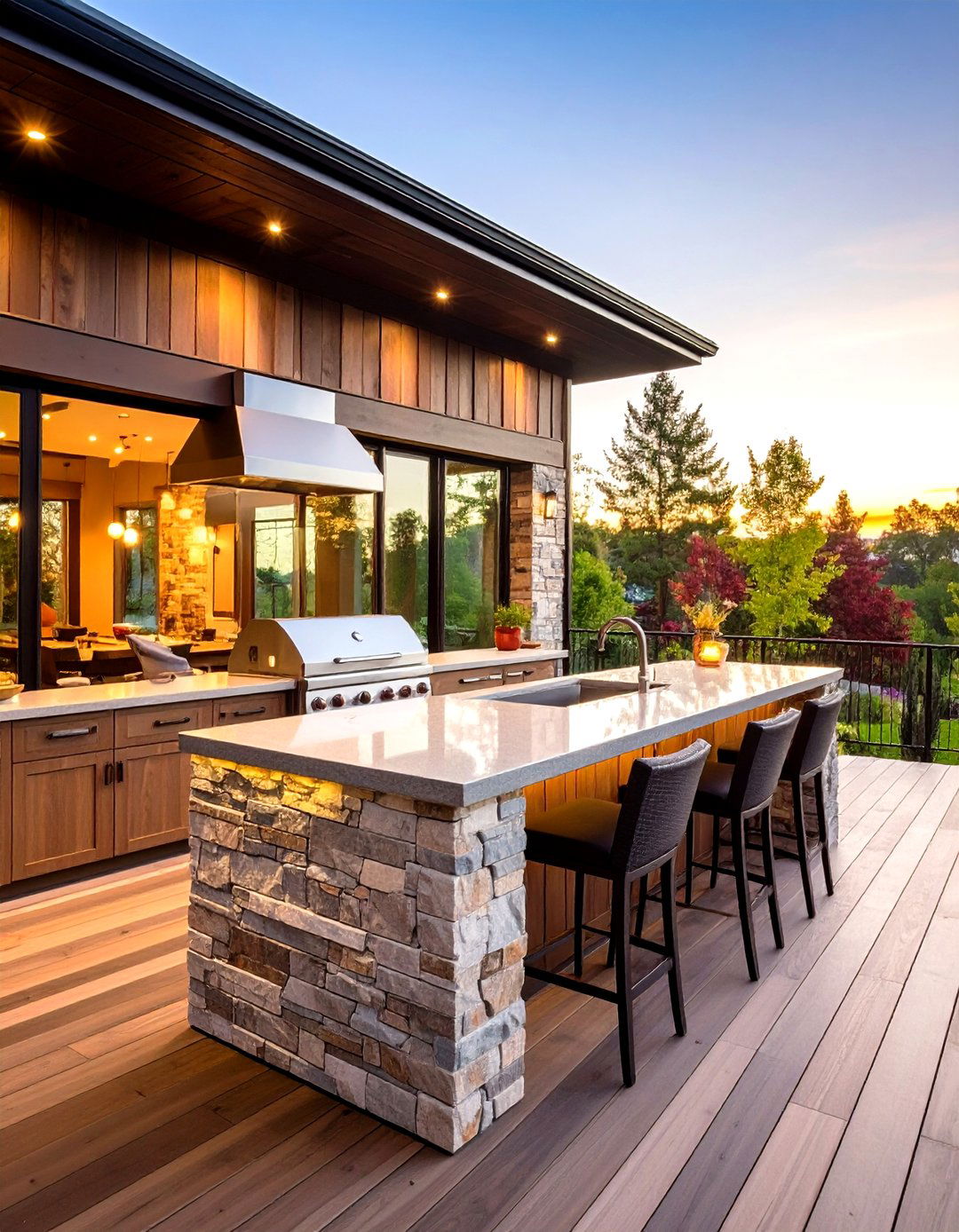
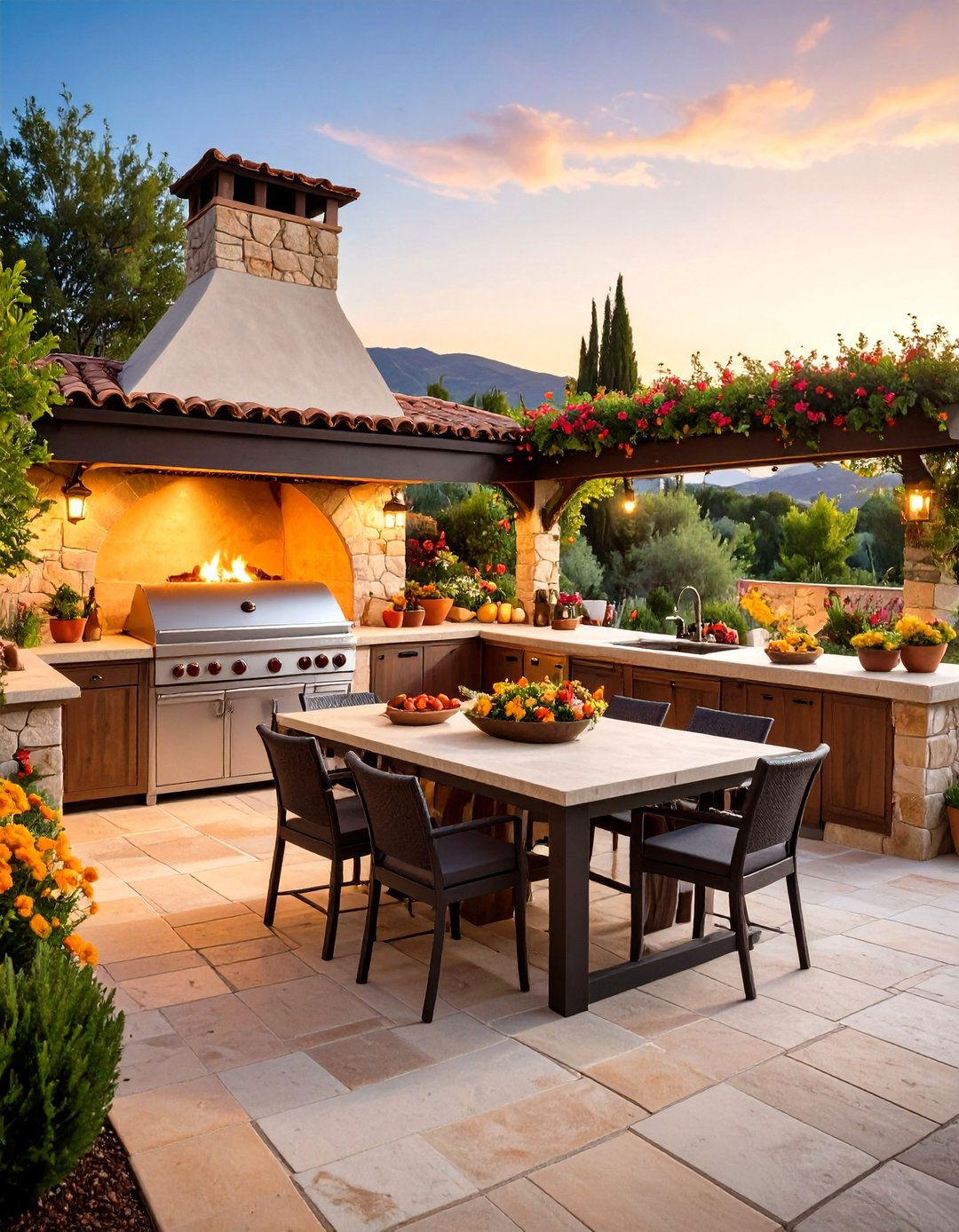
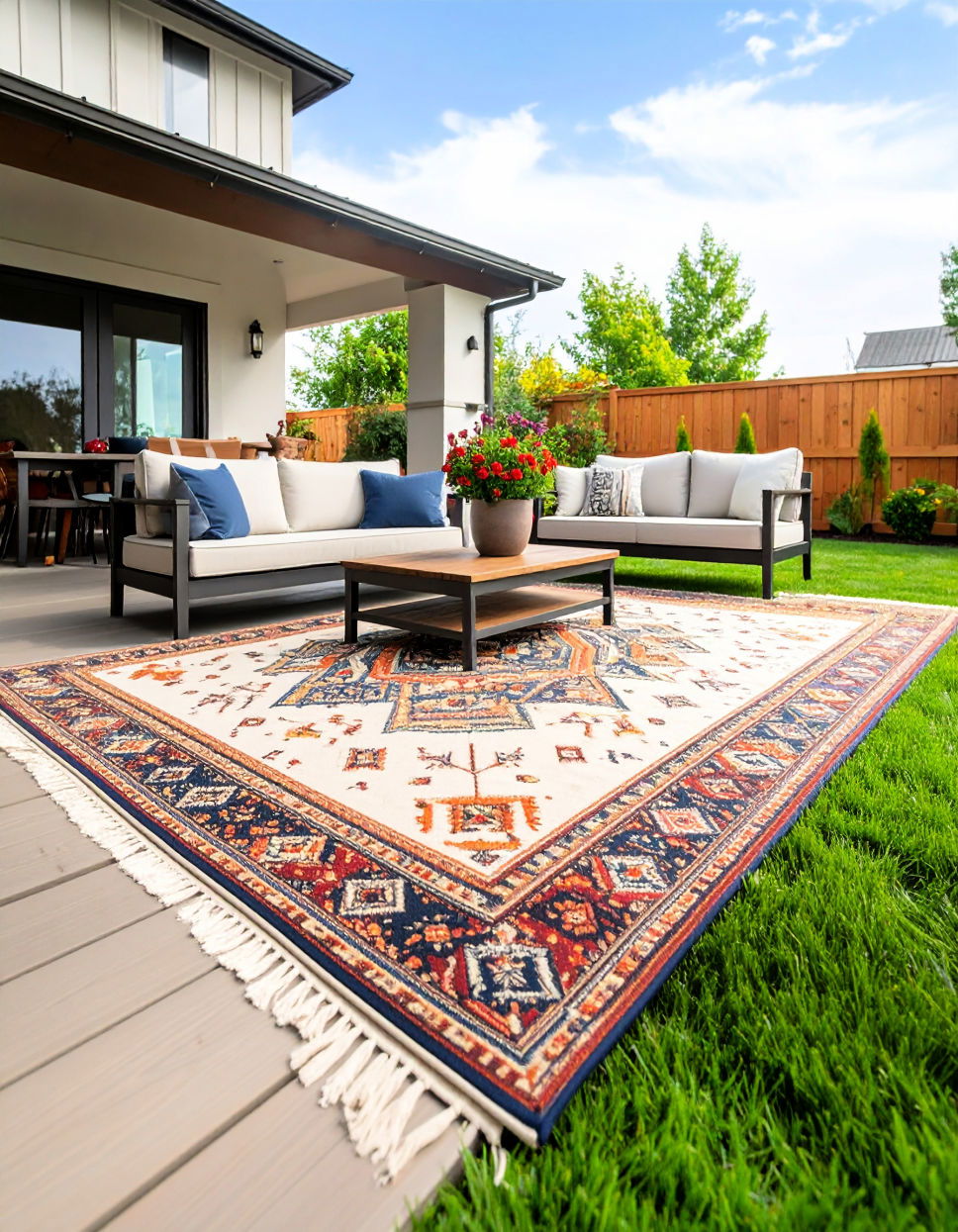

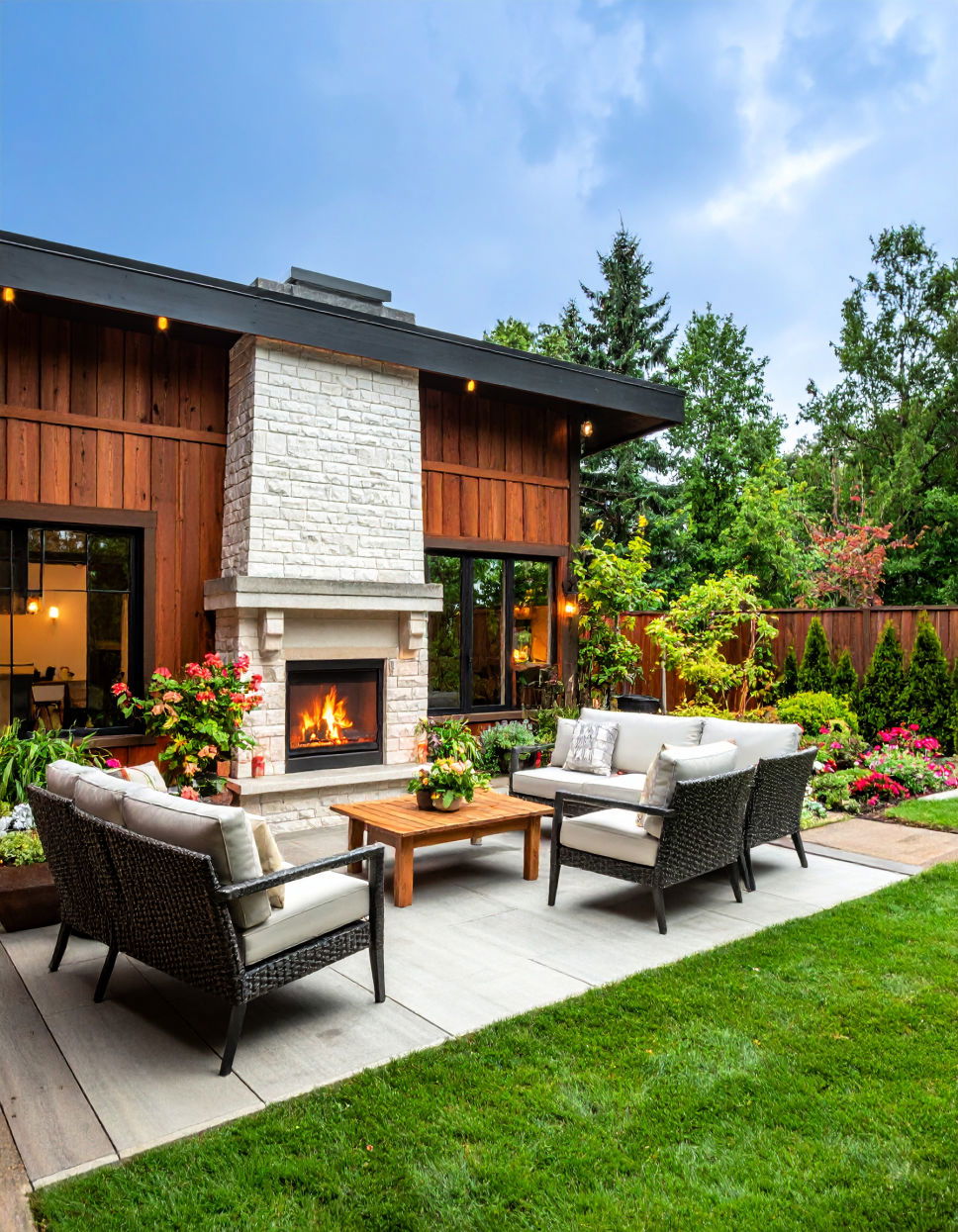
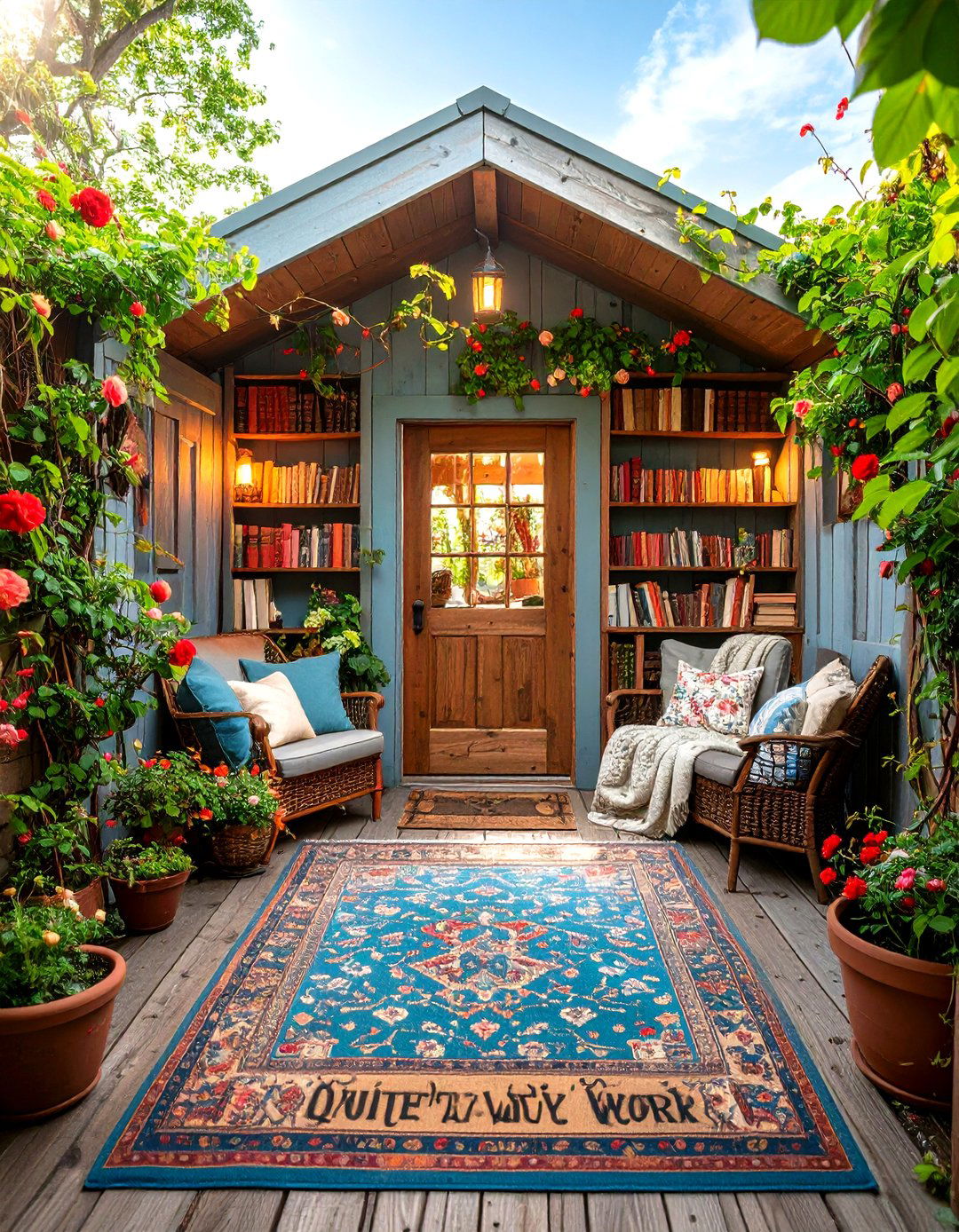
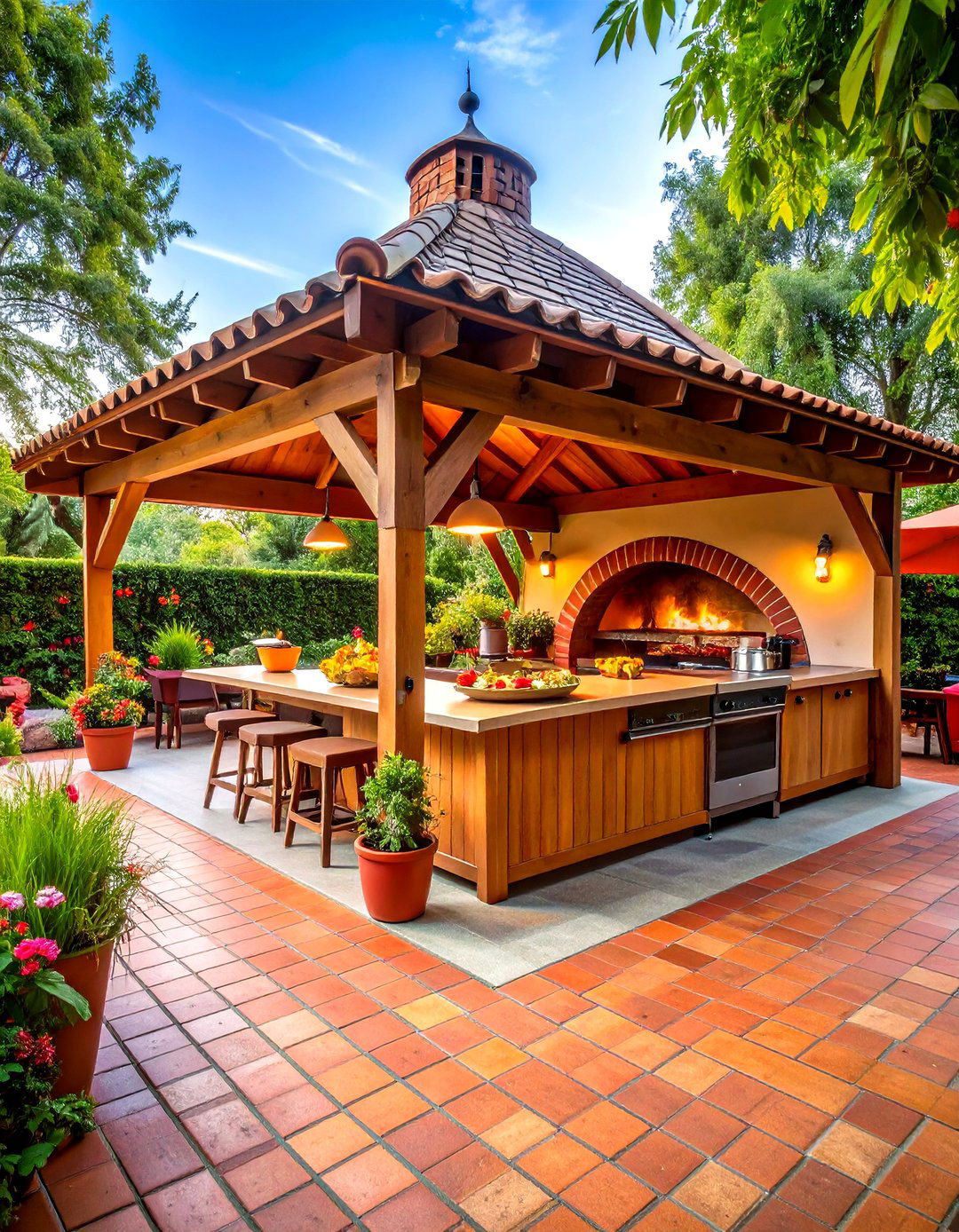
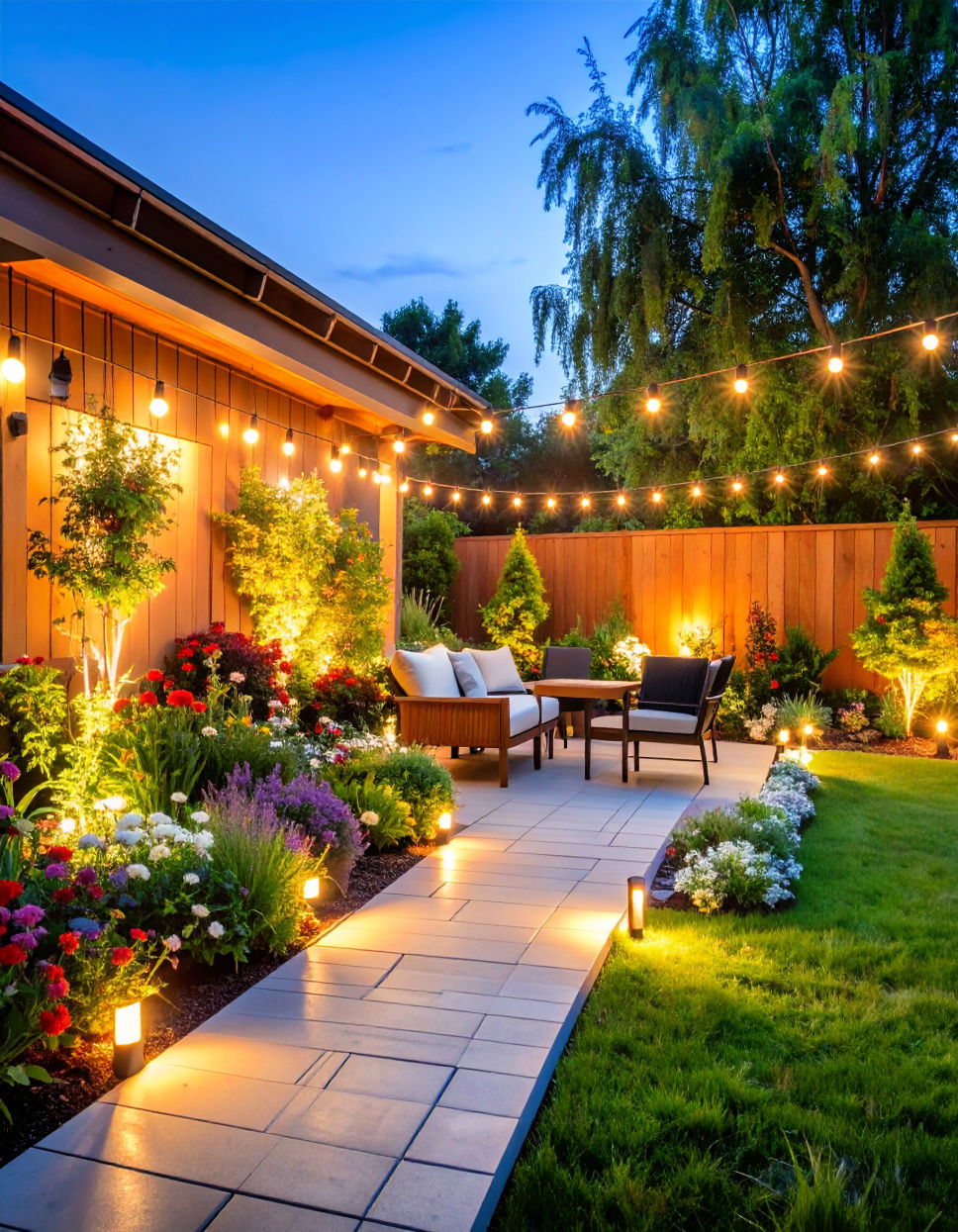

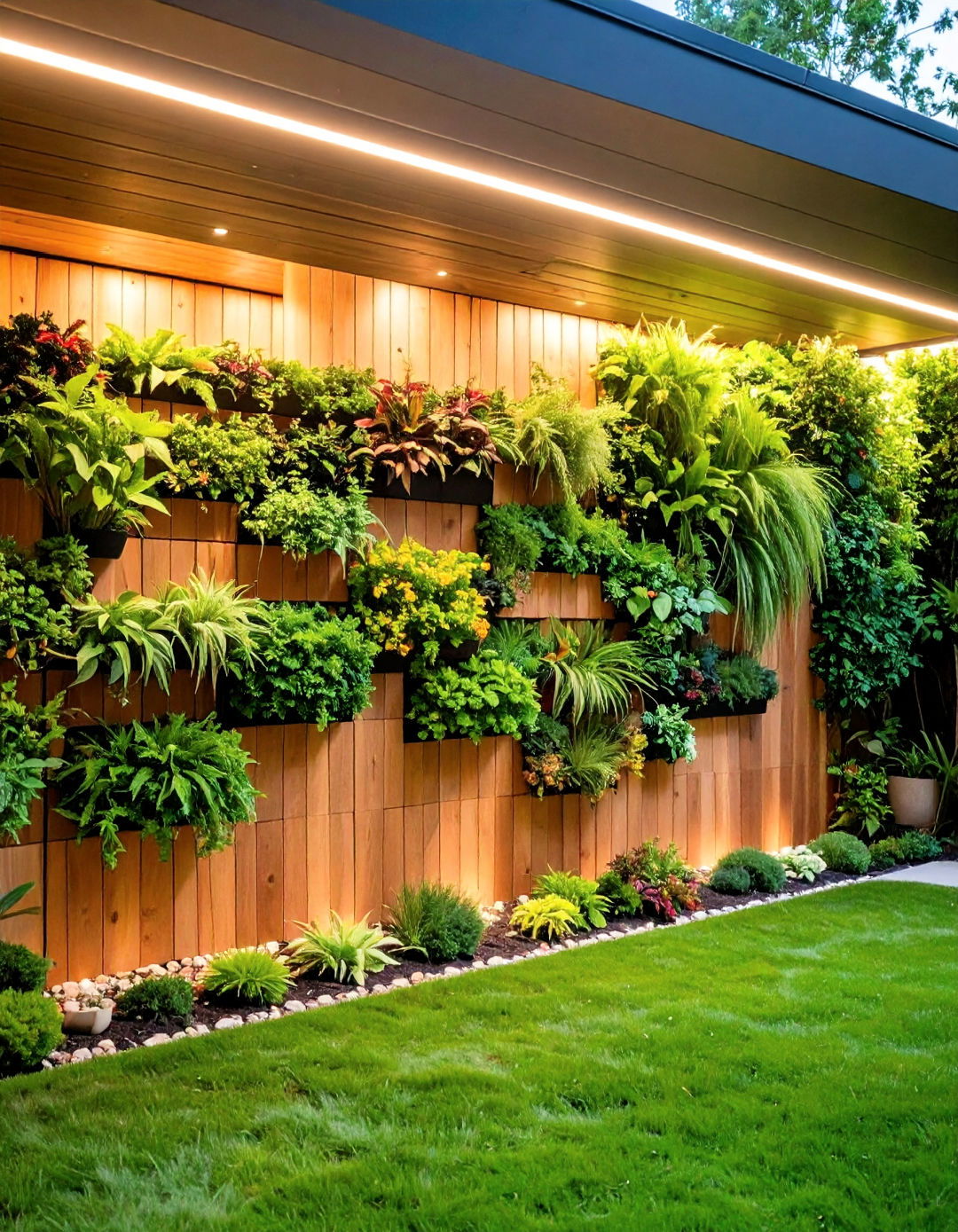
Leave a Reply